The tondo frame in Renaissance Florence: a round-up
by The Frame Blog
…including Alessandro Cecchi, ‘Les cadres ronds de la Renaissance florentine’: this article was first published in Revue de l’Art in 1987 (no 76, pp. 21-24) and is republished here in an English translation by The Frame Blog, with extra illustrations; and additional notes, which include reference to Roberta Olson’s ‘Lost and partially found: the tondo, a significant Florentine art-form, in documents of the Renaissance’, Artibus et historiae, 1993, vol. 14, no 27, pp.31-65; also to Chiara Franceschini’s ‘The nudes in Limbo: Michelangelo’s Doni Tondo reconsidered’, Journal of the Warburg & Courtauld Institutes, 2010, vol. 73, pp. 137-80.
This piece is dedicated to Sophie Neve on her birthday, because, as she said, frames are just a lot of square things…
Alessandro Cecchi, ‘Tondo frames…’
‘The tondo: one of the most original innovations of the Renaissance in Florence’
Bernardo Rossellino (1409-64), tomb of Leonardo Bruni, 1446-48, marble, 610 cm. high, and detail of Madonna tondo, Santa Croce, Florence. Photo: Sailko; detail from Brogi, c. 1890-1903, Graphic & Photographic Collections of the Castello Sforzesco, Milan
Luca della Robbia (after; c.1399-1482), Madonna & Child with two angels, 1428, polychromed stucco, 40 cm. diam., reframed in the 19th /20th century, Ashmolean Museum
Moritz Hauptmann’s Der Tondo… [1], the foundation for all later studies, established that the origin of the circular image of the Madonna and Child (sometimes surrounded by angels) can be found in Florentine sculpture from the first half of the 15th century. Among the earliest examples known today are the polychrome stucco tondo of the Madonna & Child with two angels in the Ashmolean, an early work by or after Luca della Robbia, c.1428, and the marble versions by Rossellino and Desiderio in the lunettes of funerary monuments to Leonardo Bruni and Carlo Marsuppini in Santa Croce [2].
Masaccio (after; c.1401-28), The Berlin Tondo, desco da parto, c.1427-28, tempera and gold leaf on panel, 56 cm. diam., Gemäldegalerie, Berlin. Photo: Sailko
However, we should not forget the round or octagonal deschi da parto, or ‘birth trays’ of the early Quattrocento, decorated with themes relating to childbirth or with secular allegories, which were used to present gifts to the new mother, or her meals whilst lying-in; these formed part of the decorative interior of the Florentine home [3]. Some of them are particularly celebrated and historically interesting: for example, the tray attributed to Masaccio in the Gemäldegalerie, probably executed by a painter in his circle and dating from around 1430-40 [4], or the one painted by Lo Scheggia with the Triumph of Fame in 1449, to commemorate the birth of Lorenzo the Magnificent (Metropolitan Museum) [5].
Lo Scheggia (Giovanni di ser Giovanni Guidi; 1406-86), The triumph of Fame, Medici desco da parto, c.1449, tempera, silver and gold leaf on panel, 36 ½ ins (92.7 cm.) diam. overall, Metropolitan Museum, New York
The earliest tondi paintings are linked more or less thematically to the deschi da parto: the Adoration of the Magi by Domenico Veneziano, c.1439-41, Gemäldegalerie, another Adoration by Fra Angelico, finished by Filippo Lippi in 1445, in the NGA, and a Madonna and Child, also by Filippo Lippi in the Palazzo Pitti, Florence, of c.1453. The latter contains background scenes from the life of the Virgin, in which her own birth is prominent.
Within this iconographical tradition, the first known tondo by Botticelli also depicts an Adoration of the Magi (National Gallery, London, c. 1473), followed, amongst others, by the Raczinsky tondo, which was possibly executed for San Salvatore al Monte and is now in the Gemäldegalerie [6]. What became a two-decade long series of such paintings, produced either by Botticelli himself or by his studio from his drawings, includes many which have now lost their frames (as with the majority of the works of his peers), either through the wood deteriorating, or – and above all – through changes in taste.
Botticelli (1445-1510), Madonna of the pomegranate, c.1487, tempera on panel, 143.5 cm. diam., Gallerie degli Uffizi
Amongst the rare cases where the original frame has survived, Botticelli’s Virgin of the Pomegranate in the Uffizi must be one of the more important examples.
The decorative motifs, which cover the frame and are carved with great skill and refinement, include golden lilies on an azure field; these refer to the alliance of the Florentine Republic with France, which rightly made Herbert Horne believe that the tondo ‘had been created for some office of the Republic’ [7]. Golden lilies in grey roundels, some of which can still be seen, appeared in Michelozzo’s decoration of the first courtyard of the Palazzo Vecchio, around 1453 [8], and the fleur-de-lys of France on an azure field decorated the Medici arms after the death of Cosmo de’ Medici in 1464 [9].
In a note in his edition of Vasari’s Le Vite…, on the ‘Life of Botticelli’, Gaetano Milanesi mentioned a tondo made in 1487 for the audience hall of the Magistrato de’ Massai della Camera in the Palazzo Vecchio. This note led Herbert Horne to identify this tondo with the painting of the Virgin of the Pomegranate in the Uffizi, and his proposition has been accepted, with the dating it implies, by most critics [10].
Detail of carved giltwood coffering with panels of lilies, ceiling of the Sala dell’ Udienze, Palazzo Vecchio, Florence
The painting must therefore have been produced from that pressure-cooker seething with great works of art which the Palazzo Vecchio (then the Palazzo della Signoria, the seat of the city magistrates) – became, after the Signoria’s allocation of funds on 20 April 1469 [11]. Over the next twelve years or so, this intense burst of work saw the creation of the Sala dei Dugento on the first floor of the palazzo, and the Sala dei Gigli and the Udienza, or Audience Chamber, on the upper floor. Their richly carved and gilded ceilings and friezes were executed under the direction of Benedetto da Maiano, his brother Giuliano, Francesco di Giovanni (Francione), Francesco Monciatti, Giovanni da Gaiuole and the brothers Marco, Domenico and Giuliano del Tasso [12].
Whilst the structural alterations and decorative work were proceeding, the works of art intended for the palazzo were commissioned, and here, according to the Anonimo Magliabechiano [13], Botticelli played an important part: he executed a painting of the Three Kings above the staircase of the Catena, and, on 5 October 1482, he and Ghirlandaio were commissioned to paint a fresco on one wall of the Udienza.
Benedetto & Giuliano da Maiano, detail of carved giltwood coffering, ceiling of the Sala dei Gigli, Palazzo Vecchio, Florence
The frame of the Virgin with the pomegranate, executed around the same time as the painting – or, rather, a few years later – recalls, in the technical virtuosity of the carving and the ornamental motifs, the ceiling coffering in the Udienza and the Sala dei Gigli, or Hall of Lilies, executed between 1476 and 1481. There are panels with enriched floral chains and running mouldings with chains of lilies around the hexagonal coffers in the Sala dei Gigli, and there are panels with alternating lilies round those in the Udienza.
Marquetry door between the Sala dell’ Udienza and Sala dei Gigli (Gigli side), and detail of fleur-de-lys panel (Udienza side), Palazzo Vecchio, Florence; detail of the frame of Madonna of the pomegranate, Uffizi
The marquetry doors of the Udienza are similarly enriched with panels of woven ornament, and also with a chain formed of lilies and their leaves, remarkably similar to the gold lilies on a blue ground on the tondo frame. The doors were made by Giuliano da Maiano and Francione [14], and a careful comparison of the respective motifs indicates that the tondo frame can also be attributed to Giuliano da Maiano’s busy workshop; he spent some time in Florence in 1486-87, when various experts were consulted as to solutions for the façade of Santo Spirito [15].
Andrea della Robbia (1435-1525), Prudence, c. 1475, glazed terracotta, 64 ¾ ins (164.5 cm.) diam., Metropolitan Museum, New York
In the last decade of the Quattrocento, a type of frame emerges which is closely connected to the fruit and floral garland frames of glazed terracotta tondi by the Della Robbia family [see more on the history and symbolism of garland frames in ‘Fruit, flowers, foliage: the symbolism of Renaissance frames’].
Luca Signorelli (c.1450-d.1523), Madonna & Child, c.1495, limewood panel, 87 cm. diam., Alte Pinakothek, Munich
Luca Signorelli (c.1450-d.1523), Holy Family & saint, 1490-92, o/panel, 99 cm., Galleria Palatina, Palazzo Pitti, Florence
An excellent example is the carved giltwood frame of a Madonna and Child by Luca Signorelli in Munich, dated around 1495 [16], as well as – because of its structural and technical similarities – the frame of another Signorelli tondo in the Palatine Gallery of the Palazzo Pitti (suggested by Marilena Mosco [17]).
Michelangelo (1475-1564), Doni Tondo, tempera on panel, 1505-06, 120 cm., Gallerie degli Uffizi
A decisive leap forward in the design of the tondo frame on a sculptural level, and – in terms of innovation – on the ornamental level, occurs with Michelangelo’s breathtaking Doni tondo, which can now be dated, on the basis of recent research [18], to c.1506.
The frame, like the painting, has recently undergone a restoration which strikingly highlights the revolutionary nature of the whole work. The ornamental moulding at the back edge of the frame was long ago sawn off, and replaced by two wider mouldings, rendering it noticeably wider than the original [19]. Otherwise it is complete, and has now also recovered the splendour of the original gilding, as well as the polychromy of the three-dimensional carved heads which punctuate the scrolling grotesques on the frieze.
The dynamism of the various carvings, along with the strength and expressiveness of the heads, and a decorative vocabulary which is markedly ahead of its time, have suggested – at least in terms of the ornamental motifs – that they were designed by Michelangelo himself [20].
The frame has been attributed, as it still occasionally is – without any stylistic basis – to the Sienese carver, Antonio Barili [21], although it is characteristically Florentine in style, and should correctly be credited, according to Ulrich Middeldorf, to the Del Tasso family workshop [22]. Stylistic comparisons are made difficult by the lack of firmly documented works, because of the destruction or dispersal of Florentine decorative interiors; however, the reference to the Del Tasso family is indirectly confirmed by the phrase (seen in documents by Cinelli in 1677), ‘with splendid pillars carved by Tasso’, referring to the bridal chamber of the patrons, Agnolo and Maddalena Doni. Michelangelo’s tondo was to be part of the decoration of this room from the beginning, and it is logical to assume that the craftsmen responsible for the rest of the interior would be commissioned to make the frame [23].
Domenico Beccafumi, Holy Family with St John as a child and a donor, c. 1528-35, Museo Horne, Florence
The success which the monumental setting of Michelangelo’s tondo had in the nearby city of Siena is witnessed by the richly carved and gilded frame of Beccafumi’s Holy Family with St John as a child and a donor, which is also traditionally given to Antonio Barili (1453-1516/17). However, this attribution to the celebrated Sienese carver cannot be sustained if the painting, as is generally accepted, dates from the late 1520s or early 1530s, twelve or more years after his death, and if the hand of his nephew Giovanni is excluded: the latter was working in Rome on the carved interior decorations of the Vatican Stanze and Loggie from 1514, and he died around 1529 [24].
Whilst awaiting further research in this area, other master-carvers can be considered – for example, one who was already working in the Barili family’s workshop, and was a follower and imitator of their style; since the densely sculptural and overblown grotesques on the frieze of the frame do vividly recall the work of Antonio Barili [25].
Domenico Beccafumi (1486-1551), Christ carrying the Cross, 1540-45, Oratorio of San Bernardino, Siena
Beccafumi used the same woodcarver later in his career, as witnessed by the very similar rectilinear frame of Christ carrying the cross in Siena, attributed to the artist’s last decade.
The author of these two frames might, therefore, be Lorenzo di Girolamo Donati, who was called upon on 28 April 1540, along with Beccafumi, Bartolommeo di David and Francesco di Carlo Tolomei, to judge a bronze crucifix executed by Giovannandrea di Carlo Galletti for the Confraternita della Morte in Siena [26].
Donati was a sculptor and architect, and a pupil of Antonio Barili. He is documented from 1534 to 1541, and between 1534 and 1538 he executes a ‘jalousie’ or shutter for one of the windows of the Palazzo Pubblico di Siena, carved after a design by Baldassarre Peruzzzi (1481-1536) [27].
Baldassarre Peruzzzi (1481-1536), design for a frieze with the Arms of Cardinal Rangone; two putti with a swan and lion, pen-&- ink, brown wash, heightened with white/ paper, 13.1 x 35.1 cm., © The Trustees of the British Museum
The similarities in the four heads carved on the tondo frame in the Museo Horne to studies of heads, characteristic of Peruzzi’s later drawings, would seem to confirm this connection. However, the idea that Beccafumi himself may have had an part in the design of the frame cannot be ruled out completely, since – according to Vasari – his equestrian monument of Charles V (‘all of pasteboard and hollow within’), erected for the arrival of the emperor at Siena in 1536, demonstrated ‘that he was a master no less of sculpture than of painting’ [28].
**********************************
Additional notes on tondi frames by The Frame Blog
Classical sources
For one point of origin, see the imagines clipeatae in Steve Shriver, ‘Framing in the Roman era’ ; for more on ‘garland frames’, further classical sources and Della Robbia frames, see ‘Fruit, flowers, foliage: the symbolism of Renaissance frames’.
The second of these articles shows an early source for round images – the scenes painted inside ancient Greek vases, bowls, cups and plates – but it is worth publishing further images to show the different borders which may contain figural and other scenes.
The Brygos Painter (attrib.; fl/ 490-470 BC), red-figured kylix with a symposiast, Philippos, & a dancing girl, Kallisto, 490-480 BC, pottery, image 17.3 cm. diam., © Trustees of the British Museum
Lucanian red-figured plate with owl, c.400 BC, 14.2 cm. diam. overall, Christie’s, 7 October 2010, Lot 236
The first image shows the inside of a cup with a tondo set in a border of Greek fret and crosses, equating to the geometric and architectural ornament which would later emerge in modern giltwood frames. The pictorial scene both uses this border (the girl’s foot follows the curve of the inside edge as though it were part of the image) and subverts it (it cuts through the table, suggesting that the scene continues beyond the ‘frame’, as in modern paintings). The lower image has a plate bordered with the forefather of a garland frame – olive leaves surrounding a slightly pixilated-looking owl.
Roman mosaic tondo with Dionysos, a lion, cupids and maenads, 1st century BC, from House of the Centaur, Pompeii, Museo Archaeologico Nazionale, Naples
Mosaic tondialso exist, often as the centrepiece of a much larger work; and here the likeness to modern frame decoration gets even closer, both in the use of architectural ornament, and of complex garlands incorporating fruit and flowers. The mosaic above has a border which can be imagined as a carved architectural moulding – a central frieze with a guilloche ornament, bordered by three-dimensional fillets and cavettos; and there are also mosaic borders, linear and tondi, which depict festoons of leaves, fruit and sometimes flowers.
Roman mosaic tondo with portrait of Dionysos in a wreath of fruit and leaves, El Djem Archaeological Museum, Al-Djamm, Tunisia. Photo: Damian Entwistle
Central portrait in garland frame, Roman sarcophagus for Semne, late 3rd – 4th century AD, Christie’s, New York, 4 June 2008, lot 277
Luca Signorelli (c.1450-d.1523), Madonna & Child, c.1495, limewood panel, 87 cm. diam., Alte Pinakothek, Munich
The garland framing a portrait sculpture on the Roman sarcophagus above is uncannily close to the carved and gilded frames of Madonna tondi, such as this one, mentioned by Cecchi, on Signorelli’s Madonna in Munich. The bound urns or cornucopiae at the base from which the two branches of leaves and fruit spring, and the flower at the top where they meet; even the variety of fruit – they might all have been translated into giltwood by a carver who has studied similar classical garlands, sketched them carefully, and then re-used them in his own medium. The tondo is, in fact, not so much ‘one of the most original innovations of the Renaissance in Florence’, as a continually reappearing form, which is adapted and adjusted for each successive period – frame and all.
Architectural tondi
Brunelleschi (1377-1446) & Donatello (c.1386-1466), Old Sacristy (1419-28), San Lorenzo, Florence. Photo: Sailko
The beginnings of the Madonna tondo may be traceable to its inclusion in funerary monuments, as noted above, but roundels with images inside three-dimensional mouldings are also an architectural element, taken from the classical vocabulary and used by Donatello and Brunelleschi to decorate the Old Sacristy of San Lorenzo. The interior space of the sacristy, created with sphere and cube in tension, presents its elevations according to this fundamental geometry, the classical rectilinear elements of pilasters and entablature offset by round arches and tondi.
The sacristy was finished by 1428, with the tondi designed as blank circular mouldings of pietra serena in the pendentives beneath the dome, and in the lunettes between them. The bays each side of the altar were likewise bare of ornamentation, and even of the later aedicular doorcases. Brunelleschi’s vision was of a pared-down and classicizing geometry in dark grey pietra serena and off-white plaster, which seems to have been approved by his patron, Giovanni di Bicci de’Medici, whose mausoleum the sacristy was to be.
Donatello’s stucchi in Brunelleschi’s roundels: from left, St Luke; St John on Patmos; St John, Old Sacristy, San Lorenzo. Photo: Henk Bekker
However, after Giovanni’s death in 1429, his sons wanted a rather more opulent and ornamental interior. Donatello was commissioned to fill the roundels in the pendentives with scenes from the life of St John the Evangelist, and the roundels in the lunettes with the four Evangelists. He executed all of these in stucco, directly into the stone frames [29]. The subdued, earthy tones of the stucchi harmonize with the monochrome interior as Brunelleschi conceived it; so that, although he disagreed with the importation of any image, ornament or decorative architectural features into the sacristy, he did not have to face the greater extreme of brightly-painted frescos or altarpieces. The tondi presumably exerted their own specific influence on – for example – the funerary monuments referred to, in their combination of plain moulding and sacred image.
Jessica Clinton’s MA thesis tackles the date for Donatello’s intervention in the decoration of the sacristy. As she says,
‘According to Vasari, “Cosimo pressed this work forward with greater ardour, and while one part was being begun, he would have another finished. Looking on the work as a pastime, he was almost always there, and it was his solicitude that caused Filippo to finish the sacristy, and Donato to make the stucco-work, with the stone ornaments for those little doors and the doors of bronze.” With this information it is now clear that Brunelleschi was still in the process of finishing the sacristy while Donatello was creating the ornamental elements, leading me to believe, if we accept Vasari’s account as fact, that the earlier dates of 1429-1432 are more likely for Donatello’s work in the Old Sacristy.’ [30]
Donatello (c.1386-1466), The raising of Drusiana, stucco tondo in the pendentive, above the Medici stemma, 1429-32?, Old Sacristy, San Lorenzo
Vasari isn’t always completely reliable, but if his dates are indeed to be trusted, then this may be one of the earlier uses in the 15th century of coloured figural tondi framed by three-dimensional mouldings (excepting portrait roundels). That is to say, not free-standing painted panels in removable wooden frames, as is more narrowly understood by the term, but framed images which were part of a wider use of the form, which pre-existed, and which certainly exerted considerable influence on painters and carvers, just as Brunelleschi’s general adoption of classical proportion catalyzed the replacement of the Gothic polyptych by the quadro in its aedicular frame [31].
Brunelleschi (1377-1446), Pazzi Chapel, Santa Croce, Florence; with an Apostle tondo (Bartholomew; glazed terracotta, 134 cm. diam.), left, & Evangelist (St Matthew), right, in the pendentive above the Pazzi stemma
The stucco scenes and Evangelists inserted into Brunelleschi’s spare roundels by Donatello had a later outcome in the four fully-coloured tondi of the Evangelists (designer/maker disputed) and twelve blue-&-white Apostles, made in glazed terracotta by Luca and/or Andrea della Robbia from c. 1445 -70, for the empty frames in the Pazzi Chapel – another design by Brunelleschi which was updated near to and following his death. Together with the tondi in the Old Sacristy, they represent a developing use of coloured images in circular frames within public spaces; although the frames are still plain, undecorated mouldings [32].
‘Lost and partially found: the tondo, a significant Florentine art-form, in documents of the Renaissance’
Roberta Olson’s article on tondi, ‘Lost and partially found: the tondo…’ [33], is helpful in evaluating what was meant by a free-standing or ‘autonomous tondo’ at the time (between c.1300 and 1612); how they were referred to in inventories; whether they were deschi da parto, gems, or round paintings; references to them in Medici inventories, contracts and invoices, and daybooks; tondi in public and private interiors, and depictions of them in paintings and prints; sculpted tondi. She sees them as predominantly domestic items, although noting important instances in civic and ecclesiastical spaces.
Documentary references
Her section on the Inventories of the Magistato dei Pupilli Avanti Il Principato (inventories of possessions in what equated to the remit of the English Court of Chancery) notes that:
‘Since most Florentine homes during the 15th and early 16th centuries probably did not have chapels, and evidence suggests there were no altars within the chambers, special attention seems to have been paid to the installation of selected devotional objects. For example, the chambers of several early 16th century households featured tondi set in elaborate frames with candleholders. Some are described in the inventories as having a veil covering as a show of respect, implying the sacred devotional function of these images.’ [34]
In the same inventories, she traces the development of references to deschi da parto, which gradually seem to modify into references to tondi, occasionally with the frame mentioned; for example, in 1497,
‘1o tondo chon chornicione d’oro e dipinto da donna dparto’, or ‘a tondo with gilt frame, painted for a new mother’ [35].
Masaccio (after; c.1401-28), The Berlin Tondo, desco da parto, c.1427-28, tempera and gold leaf on panel, 56 cm. diam., Gemäldegalerie, Berlin. Photo: Sailko
Olson has no explanation as to why the desco da parto seems to have had a relatively short life, being replaced in the home (as it appears) by circular paintings of (especially) the Madonna and Child, but it may have been a purely utilitarian change: using a detailed oil painting with a carved giltwood frame as a tray might have come to seem wilfully destructive, and the deschi may have spent much of their time spent propped up vertically, to be appreciated rather than used.
In the 1492 inventory of the Palazzo Medici, made after the death of Lorenzo de’ Medici, she finds the description of free-standing tondi, including this one, which is most probably related to a surviving painting (The Adoration of the Magi by Fra Angelico, finished by Filippo Lippi (c.1440-60), and mentioned by Alessandro Cecchi, above):
‘Uno tondo grande cholle cornicie atorno mess d’oro dipintovi la nostra Donna e el nostro Signore e e’ Magi che vanno a offerire, di mano di fra Giovanni, f. 100’ – ‘A large tondo with a frame around it of gold painted with Our Lady and Our Lord and the Magi who come to offer [their gifts], from the hand of Fra Giovanni [Fra Angelico], 100 florins.’ [36]
Fra Angelico (c.1395-1455) & Filippo Lippi (c.1406-69), The Adoration of the Magi, c.1440-60, tempera on poplar, 54 1/16 ins (137.3 cm.) diam., reframed in a modern replica; National Gallery of Art, Washington
Very sadly, given this documentary record and the high value put on the work, the original frame described in the inventory hasn’t survived, and the panel has been put into a copy of the frame by the Maiano workshop on Botticelli’s Madonna of the pomegranate, which is thirty or more years later than the Fra Angelico/Filippo Lippi panel. The latter also obviously lacks the political and contextual significance of the Botticelli, which is symbolized in the fleur-de-lys decorating its frame.
Domenico Veneziano (c. 1410-d.1461), Adoration of the Magi, c.1438, 90 cm. diam., reframed in a modern replica; Gemäldegalerie, Berlin
A second Adoration tondo noted in the 1492 Medici inventory[37] is by Domenico Veneziano; it has also been reframed in a much later style than it would have possessed originally. However, since these two works ‘are believed to be the earliest surviving painted examples of the form’, there is no model on which to base reframings, save for something like The Berlin Tondo mentioned by Alessandro Cecchi (and illustrated above), which is a desco da parto rather than a wall-mounted painting, now dated to c.1427-28 and just over half the size of the Veneziano.
Olson looks for references to tondi in a variety of other documents, including posthumous inventories of artists’ studios (noting examples in those belonging to Benedetto da Maiano and Filippino Lippi), as well as invoices/receipts, daybooks, and contracts.
Filippino Lippi (c.1457-d.1504), Angel of the Annunciation (above), Virgin of the Annunciation (below), 1483-84, o/panel, 110 cm. diam., Museo Civico, San Gimignano
The documents relating to a commission by the Comune of San Gimignano fortuitously highlight this pair of Annunciation tondi by Filippino Lippi, which formed the centrepiece of a recent Christmas exhibition in Milan, from November 2019 to January 2020. These were commissioned to hang in the Audience Chamber of the Palazzo del Popolo in 1482, and were initially projected as being two panels, either square or round, whichever would appear best (presumably to the two citizens chosen to oversee their execution). A sum of 80 lire for the paintings and 40 for the frames seems to have been allocated [38]. However, the tondi also seem to have been reframed six years after completion, in 1490, in carved, polychrome, parcel gilt and silvered frames by an anonymous woodworker, who is now thought to be Antonio da Colle, who worked in San Gimignano in the second half of the 15th century [39].
These are carved garland frames, but in the shape of a tight cushion moulding of imbricated bay leaves, with bands of gilded fruits peering out at intervals and spiralling red ribbons. The fruit are flattish, graphic representations of pears, fir cones, pomegranates, oranges, apples, etc., with one flower above the Virgin’s head and a group of lilies above Gabriel’s (his frame also boasts a good number of acorns). The red ribbon spiralling around the Virgin’s frame has been painted with white daisies and little florets (much as one would find on a Northern altarpiece), daisies standing for innocence or humility.
They are nothing like the three-dimensional, naturalistic fruit and foliage frames which give such vivid life to Della Robbia ceramic plaques, and which inspired the carved giltwood frames for large painted tondi [40].
Bay-leaf garlands: around the cartouche for a stemma, Pseudo-Saint Bonaventura (attrib.; c. 1217-74)), woodcuts Cristoforo Cortese (attrib.; fl. 1390-1445), Le devote meditatione sopra la passione del nostro signore, 1487, Metropolitan Museum, New York; detail of Donatello, David, c.1440s, bronze, Museo Nazionale de Bargello, Florence
They are much closer to the garlands of tightly-packed bay leaves used to surround a stemma or heraldic emblem in the 15th century, or as coronets associated with Roman warriors, emperors and heroes (like the biblical David). Since the frames were intended for the Audience Chamber of the palazzo, perhaps the idea was to find a type of ornament suited to the internal decoration of a civic state room rather than to the paintings; so the symbolic fruits, etc., have been reduced to a more minor rôle as against the heroic governmental aspect? At any rate, the pair of tondi would have made striking focal points in the room when freshly set into silvered garlands scattered with golden fruit and bound with red (probably crimson) ribbons.
Mattia della Robbia, otherwise Marco della Robbia the younger (1468-1534), contract with drawing for a Madonna tondo, 1524, Ashmolean Museum
Another document dealt with by Olson and associated with the commission of a tondo is the contract with Marco della Robbia the younger, the son of Andrea and great-nephew of Luca della Robbia, who became a Dominican friar in 1496 (although continuing to work as a ceramicist).
The contract states that:
‘On the fourth day of June 1524 Fra Mattia della Andrea of Florence a Dominican friar of his own free will &c. has promised &c. Ser Alberto Serra the present Notary to the Apostolic Court of Cardinal C[ornaro ?] &c… to create and execute for him the [panel with] figures [which is] drawn above out of terracotta which is called ‘Cretan’ fired and glazed in good and fine and appropriate colours according to the draft design and of better appearance such that the image is 3 palmi [87.45 cm. or 34 ½ ins] and the garland frame with the [band of] cherubs is another 1 ¼ palmi [in width: 36.44 cm. or 14 ½ ins] and these figures he has promised to make of good clay within fifteen days and to show them [for approval] freshly made within the same period and thereafter to fire glaze bake and finish them and consign them to Ser Alberto at his house in the City [of Rome] within a further month and a half immediately following or to be held as he agreed to return the money with a double penalty plus all losses [incurred] &c. And the aforesaid [Fra Mattia] has promised to make and execute [these items] for the price and on payment of two ducats of gold which the said Ser Alberto paid him in the presence of witnesses &c. and concerning which &c… For which &c and also those obligations which do not come within nor are comprehended in this contract we oblige him under the penalties of the Apostolic Court under oath and by regulation to fulfill therefore all these things he has undertaken resolving ecclesiastical censures by carrying out these orders &c. Enacted in Rome in his office &c. in the presence of Gerardo Poerssom clerk of the diocese of Toul and Waltero Regis clerk of the diocese of Toul as witnesses.
Thus it is given Fra Mattia by his own hand.’[41]
The document is unusual in that it includes, splendidly and unexpectedly, a study of the tondo and frame on the same page as the contract, which is the rarest of gifts in the study of frames. It also establishes (as well as the diameter of the figural panel) the width of the frame, comprising the garland of foliage and fruit and the inner band of cherubs, thus establishing that the size of the setting relative to the image was contractually agreed in a fairly precise way.
Mattia’s interest seems to have been much more in the dramatic or emotional realization of the figures in his pieces than in the garland frames which surround them; his fruits tend to be arranged in their festoon of leaves more tidily and symmetrically than in the highly naturalistic garlands of Andrea della Robbia, and the drawing for the contract confirms this.
Andrea della Robbia (1435-1525), Madonna adoring the Christ Child, c.1495, glazed terracotta, 120 cm. diam., Museo Bandini, Florence
It depicts one of the double frames which create particularly opulent borders for Della Robbia Madonnas, with a ring of winged cherubs’ heads inside the garland of leaves and fruit – heads in various positions and poses, and probably involving different models for each one – and an architectural moulding of astragal-&-beads between the two, rather than at the sight edge as in the tondo by Mattia’s father, above. Although the cherubs’ heads are clearly differentiated in the sketch, the fruits drawn in the frame are not, and in the finished article would almost certainly have included all the varieties generally seen in Della Robbia tondi, with their symbolic references to Christ, the Virgin, and Christ’s Passion. One of the figures in the drawing, of a kneeling nun, is evidently the patron (or donor), and presumably wanted to command the best available image of the Madonna – either for the chapel of her convent or, since Olson’s conclusions point to the function of tondi more frequently as domestic devotional works, perhaps for the refectory.
Tondi in public buildings
Ceiling of the Udienza, Palagio di Parte Guelfa, Florence, and tondo by Luca Signorelli (c.1450-d.1523), Holy Family & saint, 1490-92, o/panel, 99 cm., Galleria Palatina, Palazzo Pitti, Florence
Regarding tondi commissioned for the interiors of public buildings, Olson describes the location of this Signorelli painting, also mentioned above by Cecchi. Vasari reported that Signorelli had
‘painted another tondo of Our Lady which is in the Audience Chamber of the captains of the Guelph party’;
this is the Palagio di Parte Guelfa, the centre of the Guelph party in Florence, and the Signorelli Holy Family, otherwise known as the Parte Guelfa Tondo, hung in the Udienza, the officers’ Audience Chamber [42]. The ceiling here, as Olson notes, is carved with gilded coffering, each square cassette containing a tondo moulding which itself contains a gilded sunburst on a painted ground [43]. The Signorelli has a carved garland frame made up of two festoons of leaves and symbolic fruit, springing upward from ribbon-bound double tubs or urns at the base to meet under a large rose at the top. The fruits refer to various aspects of Christ, His Passion, and the Madonna [44]. The decoration of the frame, which Olson does not really tackle, thus looks inward to the painted image, commenting upon it, whilst the tondo form is linked to the patterning of the ceiling in the room where it hung. The ornaments carved on the ceiling – the sunbursts held in their own tondo mouldings – look back in their turn to the painting, and to the figure of Christ, the Christian Apollo, the Sun and Light of the world.
It is so important to retain these contexts when paintings are moved from their original homes into museums, since they are diminished by losing such a symbolic and visual correspondence with the interiors for which they were designed.
Sala dei Gigli, Palazzo Vecchio; detail montaged with Botticelli (1445-1510), Madonna of the pomegranate, c.1487, Galleria degli Uffizi
This is also true of Botticelli’s Madonna of the pomegranate; in fact there seems no earthly reason why it should not be hung on an empty wall of the Sala dei Gigli in the Palazzo Vecchio (since the Sala dell’ Udienza, its original location, was completely covered with a fresco cycle in the 16th century), rather than being crammed, as it is, into the bulging collection of the Uffizi.
Cappella del Podestà (Chapel of St Mary Magdalene), Museo Nazionale del Bargello, Florence, showing Sebastiano Mainardi’s 1490 Madonna & Child to the right of the altar, with a larger detail of the image and its trompe l’oeil frame
Olson’s article provides further examples of tondi in their original settings: in the one above, the painting has remained in situ because it is a trompe l’oeil fresco comprising an image of the Madonna & Child, its ‘frame’, and its background as part of the painted architectural setting; a frescoed tondo which has not, like so many, been cut out of its native wall and moved to a museum [45]. The trompe l’oeil encompasses not only the painting of a painting and its faux marbre and stone setting, but the elaborate decoration of the circular frieze of the frame, which – in a sculptured stone frame – would have taken the form of an inlay of pietre dure imitating a gilded chain set with jewels, but here is a painted imitation of pietre dure imitating gold and gems. It is dated 1490 on the frieze beneath the tondo. Olson notes that these frescoed tondi ‘were faster and cheaper than panels… In addition, including a tondo was a good way to make the decoration more au courant’ [46].
Pinturicchio (1454-1513), Madonna & Child, c.1492-95, fresco with applied stucco frame, Sala dei Santi, Borgia Apartments, Vatican
Another tondo executed in fresco and mentioned in Olson’s article is a Madonna & Child by Pinturicchio in the Sala dei Santi, one of the suite of rooms which were decorated for the Borgia pope, Alexander VI, in an extraordinarily rich programme, sumptuous with gilding and enamelled colours (still being restored, the suite having been sealed away for 400 years after Alexander’s death). Like the architectural ‘frames’ of the other paintings in the various rooms, the border of this tondo is executed in three-dimensional stucco and then gilded, so that it appears exactly like a carved giltwood frame hanging on or set into the wall, blurring the borders between architectural elements, and portable paintings in removable frames which are part of an interior scheme. This tondo, however, is not framed with garland of fruit, leaves or symbolic lilies, but with an egg-&-dart moulding, like the divisions between so many compartmentalized frescos.
Tondi in domestic interiors
The depiction of tondi within other paintings or sculptures of the period is less easy to pin down. Olson mentions several which appear in the backgrounds of various interior settings, but since these are mostly elaborate and imaginary confections of classical architecture, housing saints in their studies, Annunciations, etc., they are not very accurate documentary guides to how such works were actually displayed.
Woodcut from Girolamo Savonarola (1452-98), Predica dell arte del ben morire, 1496, and detail, publ. Bartolomeo de Libri, © Fundacja Książąt Czartoryskich, Biblioteka Cyfrowa, Muzeum Narodowe w Krakowie
This woodcut is much more interesting, since it shows a contemporary Renaissance domestic interior with a brick and plaster wall, tiled floor and ceiling beams, where a young man is reclining on a couch or daybed (lettuccio), with a built-in spalliera above it – a decorated panel, rather like a headboard, running the length of the couch [47]. On the wall to the right of the couch is a console, fixed above head-height, and bearing (propped up on it) a tondo with a Madonna & Child and two angels, in a frame with a twisted rope or cable moulding (like that on Lo Scheggia’s desco da parto with the Triumph of Fame for the Medici). The console appears to have a band of plain mouldings across the front, the topmost creating a lip to prevent the tondo sliding off; the fact of its being propped up like this, rather than hung on the wall, may refer back to how the deschi da parto may also have been displayed. Although the room is the battlefield for a struggle between devils and angels for the young man’s soul, overseen by an unpleasantly proximate figure of Death at the door, this is still much more of an ‘ordinary’ mercantile to upper class interior (which Savonarola’s Florentine readers would recognize) than a fictional aristocratic setting for the Virgin or the saints.
Note 126 of Olson’s article refers to tondi being hung or otherwise placed quite high on a wall, quoting Lydecker, The domestic setting [48]. Although she makes it clear that the latter produces only this same single woodcut in evidence of this point, she has previously described the positioning of the figures in the Mainardi Madonna & Child fresco as ‘look[ing] down at the viewer’. This was in a chapel used by prisoners condemned to death, whose eyes would almost involuntarily, one imagines, be drawn upward, in this way reinforcing the image of the Madonna as a quasi celestial vision of mercy, looking down from heaven on the sinner. This is presumably also the intention in the Savonarola print, the ‘real’ angels being clustered near the ceiling and gesturing to the tondo, whilst the demons are irremediably floor-bound. Such a symbolic arrangement does not, however, invalidate its being also used in physical domestic interiors, where the gilded frame would present the painted image as if in a kind of halo or mandorla, accentuated by any carved ornament refracting the light.
Given that, during the Renaissance, women were encouraged to look at images of beautiful children to ensure that their own children would be born perfect, in the image of Christ, paintings of the Madonna and Child were bound to be a more popular genre for furnishing the female areas of bedchambers, sitting-rooms, and galleries where exercise was taken. This would perhaps partly explain the proliferation of Madonna tondi as important domestic works; and, whilst placing them high on a wall might encourage the habitual position of prayer, it would also underline the heavenly origin of the vision, enclosed by the golden halo of the frame and appearing in the mundane world of the home.
More on the Doni Tondo
Michelangelo (1475-1564), Doni Tondo, tempera on panel, 1504-06, 120 cm., Gallerie degli Uffizi
Michelangelo’s Doni Tondo was (on an especially grand scale) one of such works created for a private home. It was first mentioned in a letter of 1531-32 to the artist from his pupil, Antonio Mini, as ‘your tondo, that you made for Agnolo Doni…’; and in 1549 by a Doni connection as ‘a tondo of Our Lady in the house of Agnolo Doni’ which was worth seeing [49]. A contract discovered in 2005 between the architectural woodworker, Francesco del Tasso (1463-1519), and Lodovico de’ Nobili, describes the interior in carved walnut wood and coloured wooden inlays which the former is to execute for the latter, ‘better worked than those of Agnolo Doni, or comparable to them’, indicating that a particularly important and opulently-decorated room in Agnolo’s house had been finished by the time of this second contract, 3rd January 1506 [50]. Agnolo, a rich wool merchant, had married Maddalena Strozzi in 1504, and it is assumed that the room in question may have been their bridal chamber, and that the Doni Tondo was the centrepiece of this decorative scheme. Since the contract with Tasso mentions walnut friezes, capitals (for pilasters, rather than free-standing columns) and coloured wooden inlays, the Doni interior must also have had an overall effect of stained and polished woods, picked out with parcel-gilding, with the halo of the golden tondo shining above it.
An inventory of the house, made in the late 1620s-early 1630s, confirms this, in its itemization of the interior of the great chamber on the first floor, which, it seems to be agreed, was the room containing the tondo:
‘…in the camera della sala, wainscoting – that is to say, panelling in walnut wood with parcel-gilding – against which the bed is fixed, with cupboards and chests of the same wood…’ [51].
In 1677, another description noted that the Doni house contained
‘… cassoni with spalliere [back panels] by Morto da Feltro, decorated with guilloche and grotesques, and beautiful pilasters carved by Tasso…’ [52].
Michelangelo (1475-1564), various grotesques, 1501-05, drawing in pen-&-ink, verso of sheet, © The Trustees of the British Museum
Michelangelo’s alleged part in designing the frame for the tondo cannot be taken for granted; it rests to some extent on drawings such as this, which depict small elements with intertwining zoömorphic forms and foliage, like the carved and undercut ornament of the frame, and like the evidently similar decoration of the cassoni and spalliere in the house. However, this does not necessarily prove that he actually produced any sort of complete drawing for the frame. He was a busy chap, and in any case Florentine Renaissance woodworkers were of similar status to artists, and would have undertaken the whole of a project, from design to completion (artists might sometimes produce the drawing for a major altarpiece or polyptych, but this was a collaborative, rather than a commanding act) [53]. Francesco del Tasso (1463-1519) was eminently capable of designing a frame like this by himself, being one of a vast dynasty of woodcarvers working through the whole of the 15th and most of the 16th centuries in and around Florence, Pistoia and Perugia, who produced doors, lecterns, the woodwork for the seats, panelling and inlays of choirs, the coffering of ceilings, and frames.
Francesco del Tasso (1463-1519), attrib., or a member of his family, tondo frame, 1510-40, poplar & walnut, V & A, on loan to National Gallery, London
Detail of the Doni Tondo frame; detail of Tasso frame, V & A
A tondo frame in the collection of the V & A, which has great similarities to the frame on the Michelangelo, is attributed to Francesco del Tasso or to another member of his family. It was purchased from the Florentine dealer Stefano Bardini, and was described as having come from the Palazzo Strozzi. Interestingly, the top left quadrant of the Doni frame has three crescent moons, echoing the Strozzi impresa, tangled amongst twining branches and sprigs of foliage, between two long-necked panthers (or perhaps a panther and a bear), whose bodies morph into further loops of foliage, and which diverge at the bottom into the heads of two more (sea?) monsters. These are generally thought to be four versions of the lion on the Doni coat of arms, which also has three crescent moons on a bend gules, but in any case as symbolizing the marriage of Agnolo Doni and Maddalena Strozzi [54]. This heraldic feature of the frame allows the painting itself to be dated to accord with the marriage in 1504, a connection which had previously been obscured, since in 1595 the tondo had been sold out of the Doni family and into the Medici apartments of the Palazzo Pitti.
 Michelangelo, Doni Tondo, 1504-06, detail of late 18th century reframing whilst in the collection of the Palazzo Pitti [55]
Michelangelo, Doni Tondo, 1504-06, detail of late 18th century reframing whilst in the collection of the Palazzo Pitti [55]
Here it was hung high on various walls (obeying the principle, noted by Olson, above, of tondi being placed above eye-level), but in 1780 was also reframed [56], in a style which was evidently designed to harmonize with the frame of the other great tondo which had been in the collection since some point in the 16th century (although had itself been reframed) – Raphael’s Madonna della seggiola.
Raphael, Madonna della Seggiola, 1514, 71 cm., diam., reframed in the late 17th or early 18th century, Galleria Palatina, Palazzo Pitti
Lorenzo di Credi (c.1460-1537), Madonna adoring the Child, with John the Baptist, St Joseph & an angel, c. 1500-24, o/panel, 115 cm. diam., Museo Horne, ex-Gallerie degli Uffizi. Photo: Brogi; Fondazione Federico Zeri, Università do Bologna
Meanwhile, the frame of the Doni Tondo had been given in 1796 to Lorenzo di Credi’s Adoration of the Christ Child, which was then still in the Uffizi, as a photograph in the Zeri collection records (it is 5cm. smaller than Michelangelo’s tondo, so was an almost perfect fit). This cotillion of reframings demonstrates how easily the symbolic and heraldic meanings of an original frame in relation with its proper painting can be lost or disregarded, as ownership or location alters. Fortunately, in 1902 its original frame was given back to the Doni Tondo (the Lorenzo di Credi now hangs in the Museo Horne without any frame at all), and has recently been cleaned and restored.
Michelangelo (1475-1564), Doni Tondo, tempera on panel, 1504-06, 120 cm., Gallerie degli Uffizi
Details of the Doni Tondo frame; the sculpted and polychrome heads
Chiara Franceschini suggests, after Olson, that the tondo would have been hung high on a wall in its original setting in Doni’s house, and adds,
‘The fact that the face of the upper head in the frame – identifiable as Christ’s head… would not have been fully visible unless seen from below suggests that the panel was hung in a high position’ [57].
She also offers the theory that the painting itself represents a short-lived doctrine of mercy relative to the fate of unbaptized children who had died shortly after birth (the reported fate of four sons born to Agnolo Doni and Maddalena Strozzi, before their first living child, in 1507). These children were rescued from hell by theological argument, which, during the second half of the 15th century, offered a redemption for them in that they would leave Limbo, be resurrected as 33-year-olds (the age of Christ, when He died), and inherit the empty, but beautiful, earth. The nude youths in the background of the painting are supposed to represent these resurrected children, and are linked to the group in the foreground by the figure of John the Baptist, who represents the saving sacrament of baptism [58]. Michelangelo’s composition was thus designed to give Maddalena a symbol of mercy in the figure of the Madonna, the model for a future perfect child in the Christ Child, and a model for her family in the Holy Family. At the same time she would receive comfort in the knowledge that her dead children were not to be eternally damned.
The sculpted heads on the frame are not considered, either in the Franceschini article or more generally, as part of this programme of birth, death and redemption, save for the head of Christ at the top centre – ‘perhaps the Judge in the act of some utterance’ [59]. The other heads are traditionally seen as two prophets at the top, and two angels at the bottom; but it seems strange that the frame, carved as it was by the important legnaiuolo, Francesco del Tasso, should not also be part of the same programme. The head of Christ is the mature version of the Child in the painting, bringing salvation to the world by His death, at the same age as the resurrected children in the background; so it seems possible – and a logical balance – that one of the heads below him might represent a mature version of the young John the Baptist, and the heads at the bottom should be sculpted echoes of the beautiful, redeemed youths in the background. The second prophet’s head might be a saint particularly favoured by Doni or his wife (we know very little about them), in this way binding frame, painting and patron together, and providing an expansion of the picture into the outer world.
Francesco del Tasso (1463-1519), Sala dell’Udienza, Collegio del Cambio, Perugia; interior woodwork and details of inlaid panels
Francesco del Tasso, who died aged 56 in 1519, worked in Florence, Perugia and Pistoia: much of his output, however, has vanished, the choir of Santissima Annunziata in Pistoia, for instance, probably having been looted from its second home in a convent by Napoleonic forces. He seems usually to have worked with his brother, Marco di Domenico, including on the carved and inlaid woodwork for the Sala dell’ Udienza in the Collegio del Cambio in Perugia. The intarsia panels here are decorated with grotesques and arabesques in different woods, which include (above) satyrs’ heads and morphing foliate dolphins, which echo the ornament carved in three dimensions on the Doni Tondo frame.
Francesco del Tasso (1463-1519), detail of carved gryphon in a garland frame, Sala dell’Udienza, Collegio del Cambio, Perugia. Photo: Anne Robichaud
The huge pedimented bench with Benedetto da Maiano’s figure of Justice is carved on both sides of the niche she sits in with the Perugian gryphon, set – fortuitously – in a tondo garland frame of bunched leaves, fruit and pinecones, carved with staggering naturalism and delicacy. The man who could produce these garlands and inlaid decorations would have been in no need of help from Michelangelo to design a suitable frame for the Doni painting, and would probably have been equally au fait with the theological background to the composition, given the prominence of Savonarola (who espoused the redemption of the unbaptized infant) at the time. It is irritating that art historians concerned with painters should continue to think only the latter possessed of any sort of design and compositional ability, in a period when artists in all sorts of media were equally talented, equally versatile, and regarded as equal in status with painters.
Tondi within larger frameworks
Luca Signorelli (c.1445-1523), Madonna & Child, ‘The Medici Madonna’, c.1490, o/panel, 170 x 115 cm., Gallerie degli Uffizi
In connection with the Doni Tondo, Franceschini’s article mentions this Madonna tondo by Signorelli, which is set (like Mainardi’s frescoed Madonna & Child in the Bargello) in its own faux marbre frame. She sees it as a forerunner of (or even in some sense a model for) Michelangelo’s tondo, because of the naked youths in the background, and the figures of two prophets and bust of John the Baptist in the painted frame. Vasari saw it at the Medici Villa di Castello, and states that it was painted for Lorenzo de’ Medici; it is thought now that it was painted for his younger cousin, Lorenzo di Pierfrancesco de’ Medici, for whom Michelangelo was working from 1495-96 [60].
This is particularly interesting from the point of view of the frame. Lorenzo di Pierfrancesco (1463-1503) had been married off by his cousin in 1482, and one of the two seems to have commissioned Botticelli’s Primavera for the occasion. The newly-married couple lived in the palazzo of Pierofrancesco de’ Medici (the Casa Vecchia) on the Via Larga (now Via Cavour), where ‘the ground-floor room next to Lorenzo’s room’ contained a scheme of pale woodwork, including a large pinewood lettuccio or day-bed, more than ten feet long (320 cm.) and valued at 84 lire, with a spalliera or decorative backboard, and above it a white frame holding the Primavera [61]. Botticelli’s Pallas and the centaur (40 lire) also hung there, along with a large Madonna tondo (9 ½ feet or 291.5 cm. diam., valued at 180 lire), and it may be that the former (another mythological/ humanist work) was also framed in white; the tondo more conventionally having a gilded frame [62]. There was also a vast pinewood cupboard in the room, about as long as a bus. The Primavera (valued at 100 lire) was later moved to the Villa di Castello, but it is not known when, or whether the Signorelli, which seems to carry on the idea of a white or pale frame, might have hung in one of the other rooms in Lorenzo di Pierfrancesco’s home in the Via Larga.
Donatello (1386-1466), Madonna & Child with two angels, c.1445, gilded bronze, 27 cm. diam., frame: Desiderio da Settignano (attrib.; 1429/30-64), marble, 87 x 51 cm., Kunsthistorisches Museum, Vienna
Olson’s article on tondo frames concludes by considering the place of sculptured tondi in relation to painted versions, probably as forerunners of the latter: for instance, the Luca della Robbia stucco Madonna & Child with two angels in the Ashmolean, which is dated 1428 on the back, and this Donatello bronze relief (above) in Vienna. The Ashmolean stucco is certainly earlier than any of the painted examples, and the Donatello is more or less contemporary with the first surviving painted tondi, by Veneziano and Fra Angelico/Lippi.
For an historian considering example of frames on tondi, however, the Donatello is here of greater interest than any of the other three works, all of which have lost their original settings. Its interest is enhanced by an attribution of the marble frame to one of the more prestigious named framemakers and sculptors of the 15th century, Desiderio da Settignano [63]. It is also fascinating for its use of classical forms and ornaments, which are related to Roman funeral altars and sarcophagi, as well as to Donatello’s own use of these models (eg his Annunciation, c.1435 in Santa Croce) and to their influence on Mantegna [64]. The structure of the frame, the shallow relief decorative border and the volutes ending in flowers are very reminiscent of a classical funerary altar , whilst the garland of fruit and foliage at the base and the urn of fruit and flowers at the crest both derive from so-called garland sarcophagi.
The bronze tondo is set very low in the frame, allowing two adult versions of the bronze child angels to be carved in the spandrels and upper tier of the inner panel, echoing with their own marble scroll the bronze garland held by the little angels, and predicting, in their own ageing and in the crown they also hold, the Virgin’s future coronation in heaven. This inner panel has the same Christian imagery as the tondo, in distinction to the classicizing outer frame, the scallop shells morphing here into symbols of baptism. The torches which stand on the base, outside the frame, may also have a classical derivation, but they recall the first quotation given here from Olson’s article, that
‘the chambers of several early 16th century households featured tondi set in elaborate frames with candleholders’ [65].
Olson’s article finishes with this complex and beautiful work, which she does not illustrate; but then her subject is the tondi themselves, rather than their frames, which in her article are auxiliary features in the general context and use of the paintings.
Luca della Robbia (attrib.; c.1399-1482), Madonna & Child with two angels, 1425-30, polychrome stucco, 41 cm. diam., painting, c. 1445, 120 x 50 cm., Museo Casa Rodolfo Siviero, Florence
Another means of framing tondi, apart from a circular moulding, is by embedding them in a larger or differently shaped frame, as suggested by the Mainardi fresco and the Signorelli with its painted marble frame. The stucco Madonna & Child in the Ashmolean, which opens Cecchi’s article (above), and which has a replacement frame, appears again in a small domestic altarpiece in the Casa Siviero in Florence, where another cast from the same mould is built into a slightly later gabled panel, creating the centrepiece of a triptych, with four Franciscan saints below, and the risen Christ in the gable above. The difference in medium of the (mainly gilded) stucco roundel from the painted panels enhances the sense of a celestial vison hovering above the heads of the Franciscans, and providing a sort of launching pad for the risen Christ in the apex. The various parts of this assemblage are bound together by the internal painted grey border, which must be intended to suggest a stone frame of pietra serena. This altarpiece is currently displayed high up on a cupboard in the bedroom of the Casa Siviero, which may reflect how it was seen in its original home, requiring the worshipper to look upwards to the golden world of the Madonna.
Botticelli (1444/45-1510), Portrait of a young man holding a roundel, tempera/panel, 23 x 15 ½ ins (58.4 x 39.4 cm., and detail, Sotheby’s, New York, 28 January 2021, Lot 15
Such a collage of elements inevitably suggests the Botticelli Portrait of a young man with a roundel, recently sold at Sotheby’s. Here the inserted roundel is a fragment from a larger panel by the 14th century Bartolomeo Bulgarini (fl.1337-78), possibly from a large-scale polyptych. Both its origin and recycling obviously disqualify it from being Olson’s ‘autonomous tondo’; but since the process of embedding it in a bigger panel painting to achieve a particular effect or meaning and surrounding it with its own painted frame is so close to that of the Della Robbia stucco, it adds a further dimension to this discussion of tondo frames. The painted moulding is basic, plain and architectural, allied to the borders of Brunelleschi’s architectural tondi, carved tondi in funerary monuments noted by Cecchi, and the tondi in the backgrounds of interiors in sacred scenes mentioned by Olson. It also echoes the architectural background to Botticelli’s portrait, and may reproduce contemporary miniature frames, if such things existed.
The shape of a vision
Francesco di Simone Ferrucci (attrib.; 1437-93), Madonna & Child, c.1470, marble, 26 ins (66.04 cm.) diam., Nelson-Atkins Museum of Art
Returning to those funerary monuments, a detached sculptural tondo of c.1470 provides another explanation for the association of an image of the Madonna and Child with this particular circular form. It is a shallow-relief carving in which the figures are set forward of the ‘frame’, which is decorated below the top fillet with a band of stylized palm leaves (for martyrdom) interspersed with roses (for the Virgin), with an architectural moulding inside this, at what would normally be the sight edge. The museum entry suggests that it was ‘made in connection with a wall tomb’, and adds that,
‘…the round shape suggests an occulus, an opening to Heaven, through which the soul of the deceased… might pass, there to be welcomed by the Virgin Mary, Mother of Christ and divine intercessor with God…’
Bernardo Rossellino (1409-64), tomb of Leonardo Bruni, 1446-48, marble, 610 cm. high, and details of Madonna and heraldic tondi, Santa Croce, Florence
This occulus-like depiction of the Madonna can be seen again in the funerary monument of Leonardo Bruni, where it is echoed by another tondo on the top of the frame: a much more worldly version, with a tightly-packed torus of bay leaves and berries bound with ribbon, which forms a garland frame for the family coat of arms. Given that Bruni himself was against opulence and display, perhaps it is significant that the worldly badge that he has left behind is much richer and more ornamental than the simple frieze and mouldings of the tondo representing the heaven that he is bound for.
In the end, all sacred images in circular form boil down to a vision – the domestic and comforting Madonna (usually in a mandorla-like halo of golden ornament), appearing before a woman to give her child a perfect model in her own Child, or as an archetype of the family, or as an interceding presence in illness; a paradigm of civic or ecclesiastical virtue, symbol of divine justice, and tutelary guardian; a safe conduct in plain marble for the dead. For portrait tondi, perhaps there are other reasons for the circular shape, such as correspondence with the curves of the head and body, as well as the classical connection with a shield (the imago clipeata), and with a symbolic garland or crown, in the case of the Della Robbia.
JMW Turner (1775-1851), The Dawn of Christianity (The Flight into Egypt), 1841, o/c, 79 cm. diam., © National Museums Northern Ireland; Collection Ulster Museum
Later on, in the 19th century, JMW Turner began to use frames with a round or octagonal sight for some of his works; as Martyn Anglesea suggests,
‘…the circular or octagonal format agreed better with the field of vision actually perceived by the eye… [it] also suited the vortex-like, centrifugal or funnel-shaped compositions which he was continually producing in the 1840s’ [66]
Perhaps, therefore, the circular form is also an unconscious representation of what the eye sees – an impression of immediate reality for a portrait, a suggestion of proof for the veracity of a vision – bounded by a frame of various kinds, which provides the means of focusing on the thing seen, and the ornamental or symbolic boundary between this world and the next.
**********************************
[1] Moritz Hauptmann Der Tondo, Ursprung, Bedeutung und Geschichte des Italienischen Rundbildes in Relief und Malerei, Frankfurt, 1936
[2] Hauptmann, Die plastiche Maddonnentondo, pp.119 ff
[3] Attilio Schiaparelli, La casa fiorentina e i suoi arredi nel seccoli XIV e XV, Florence, 1908, reprinted 1973, pp. 272-82
[4] Schiaparelli, ibid., vol. II, ch. III, note 73, p. 43, by M. Sframelli et L. Pagnotta
[5] For the place of this piece in the Medici commissions, see Alessandro Cecchi, ‘La committenza delle grandi famiglie nella Firenza del Quattrocento’, in AA.VV. La Rinascenza a Firenze: Il Quattrocento, Istituto Treccani, Rome, 1986, p. 231
[6] Ronald Lightbown, Sandro Botticelli, London, 1978, vol. II, B 40, pp. 53-55
[7] Herbert P. Horne, Alessandro Filipepi, commonly called Sandro Botticelli, 1908, London, p.154
[8] See A. Lensi, Palazzo Vecchio, Milan-Rome, 1929, pp. 54-56
[9] See G. Pieraccini, La Stirpe de’ Medici di Cafaggiolo, Florence, 1924, vol. I, p. 32
[10] Lightbown, op. cit., vol. II, p. 66 [NB: Roberta Olson, in ‘An old mystery solved: the 1487 payment document to Botticelli for a tondo’, Mitteilungen des Kunsthistorischen Institutes in Florenz, 1995, 39 Bd, H. 2/3, pp. 393-96, reveals the payment record which caused Milanesi to mention the tondo painted for the Udienza in 1487, and which she eventually found in the Archivio di Stato di Firenze. It notes that Botticelli the painter was paid ‘£ 32 S 16 d 4’, ’32 lire 16 soldi 4 denari’, for a tondo of the Virgin Mary for the Udienza, ‘p(ro) uno tondo virginis marie p(ro) audentia’]
[11] Provisioni of 20-21 April 1469 & 17-20 August 1470, ed. C. von Fabricay, ‘Michelozzo di Bartolomeo’, Jahrbuch der preussischen Kunstsammlungen, XXV, 1904, Beiheft, pp. 108-10, 109, note I; quoted in Nicolai Rubinstein, ‘Classical themes in the decoration of the Palazzo Vecchio in Florence’, Journal of the Warburg & Courtauld Institutes, 1987, vol. 50, p.33, note 30
[12] Lensi, op. cit., pp. 64-74
[13] K. Frey (ed), Il codice Magliabechiano, Berlin, 1892, p.105
[14] ‘Giuliano da Maiano and Francione were paid for the panels of the door… in December 1480’, quoted from Rubinstein, ibid., note 33. Lightbown, op. cit., does not mention the theory that Botticelli may have provided the designs for the figures on the Sala dei Gigli side of the marquetry doors, but it is discussed by Gabriele Mandel, L’Opera completa del Botticelli, Milan, 1967, p. 116, with references to the studies favouring this attribution. Compare Botticelli’s pen-&-ink drawing 3112 at the Musée de Besançon with the figure of Petrarch on the doors. [NB Olson, op. cit., in her note 6, p. 396, reiterates the Attribution of the frame to Giuliano da Maiano]
[15] Giuliano is documented in Florence in May 1486, when he takes part in a committee of architects, magistrates and craftsmen, and his opinion on the creation of three doors in the façade of Santo Spirito is accepted (L. Cendali, Giuliano e Benedetto da Maiano, San Casciano, 1926, pp. 17-18). He is recorded there again on 1 January 1487 when he is paid by the Strozzi for unspecified work (E. Borsook, ‘Documents for Filippo Strozzi’s Chapel in Santa Maria Novella II – The documents’, The Burlington Magazine, 1970, p. 802)
[16] Leo Cremer & Pieter Eikemeier, Italienische Bilderrahmen des 14-18 Jahrhunderts, exh. cat., Alte Pinakothek, Munich, 1976, no 37
[17] Marilena Mosco, ‘La Galleria Palatina: il quadro e la cornice’, La Cittá degli Uffizi, exh. cat., Florence, 1982-83, pp.73-77
[18] Antonio Natali, ‘L’antico, le Scritture e l’occasione, Ipotesi sul Tondo Doni’, Gli Uffizi: Studi e Ricerche 2, Florence, 1985, pp. 21-37
[19] Barbara Schleicher, ‘Relazioni sul restauro della cornice del Tondo Doni’, ibid., pp. 71-76; Natali, ibid.; Alessandro Cecchi, ‘Il tondo Doni agli Uffizi’, ibid., pp. 38-48
[20] As early as the 1920s, Frida Schottmuller suggested that Michelangelo might have provided drawings for the woodworker who made the frame (‘Michelangelo und das Ornament’, Jahrbuch des Kunsthistorisches Sammlungen in Wien, NF, II, 1928, pp. 21-332) and this hypothesis has been repeated more recently by M. Lisner (‘Zum Rahmen von Michelangelos Madonna Doni’, Studien zur Geschichte der Europäischen, Plastik-Festscrift Theodor Muller, Munich, 1965, pp. 167-78)
[21] Elfried Bock (Florentinische und venezianische Bilderrahmen, Munich, 1902, pp. 78-80) attributed the framework to Barili, followed by Henry Heydenrijk (The art and history of frames, New York, 1963, and London, 1964, pp. 37-38) and Claus Grimm (Alte Bilderrahmen, Munich, 1978, and The book of picture frames, 1981)
[22] Ulrich Middeldorf, ‘Del Tasso Domenico di Francesco’, in Ulrich Thieme & Felix Becker, Allgemeines Lexikon der Bildenden Künstler, IX, Leipzig, 1913, p. 460
[23] Alessandro Cecchi, ‘Agnolo e Maddalena Doni, committenti di Raffaello’, in Atti del Congresso internazionale di studi su Raffaello, Urbin-Florence, 1984
[24] Margherita Lenzini Moriondo, ‘Barili (Barile), Antonio’, in Dizionario Biografico degli Italiani, 6, Rome, 1964, pp. 367-69
[25] In particular, the tangle of intertwining foliage and winged animals closely recalls those of Barili on the sides of a small box used for casting votes in the Palazzo Pubblico, Siena (Adolfo Venturi, Storia dell’Arte Italiana, VIII, 1 Milan, 1923, fig. 692)
[26] Donato Sanminiatelli, Domenico Beccafumi, Milan, 1967, no 85, p. 60
[27] For Donati, see ‘Donati, Lorenzo di Girolamo’, in Thieme & Becker, op. cit., pp. 427-28. For the long and tortuous history of the ‘jalousie’ in the Palazzo Pubblico, see E. Romagnoli, Biografia cronologica de’Bellartisti senesi 1200-1800 (1835), Bibliothèque Communale de Sienne, MS LII 1-13, Florence, 1976, vol. VII, cc. 497-503
[28] Giorgio Vasari, Le Vite…, transl. by Gaston du C. De Vere as Lives of the most eminent painters, sculptors & architects, 1912-15, vol. VI, 1913, p. 244
[29] See Jessica Clinton, The ornamentation of Brunelleschi’s Old Sacristy of San Lorenzo in Florence, MA thesis, Louisiana State University, 2010, p. 47, note 73
[30] Ibid., p. 46, quoting Vasari, ‘Life of Brunelleschi’, Lives…, Gaston du C. de Vere transl., 1912, vol. 2, p. 167
[31] See George Bisacca, ‘The rise of the all’antica altarpiece frame’
[32] The cat. entry for Andrea della Robbia’s Prudence in the collection of the Met. refers to John Pope-Hennessy’s theory that Luca della Robbia’s use of brightly-coloured glazed terracotta was inspired by its potential to ‘clarify compositions in large architectural interiors’
[33] Roberta JM Olson, ‘Lost and partially found: the tondo, a significant Florentine art-form, in documents of the Renaissance’, Artibus et historiae, 1993, vol. 14, no 27, pp.31-65
[34] Ibid., p. 33, and see note 32, p.56
[35] Ibid., p. 34
[36] Ibid., p. 36, and see note 57
[37] Ibid.
[38] Ibid., p. 40, and see notes 85-87, pp. 59-60. Olson, ‘An old mystery solved…’, op. cit., note 12, p. 396, summarizes contemporary ideas of the circle as the ‘perfect form’, by which ‘the equation of God, the circle, and justice, continued Platonic ideas’, whilst ‘the Madonna’s heavenly realm’ – here with reference to Botticelli’s Madonna of the Pomegranate in the Udienza of the Palazzo Vecchio in Florence – ‘symbolized by the perfection of the circle… presided over the transaction of justice…’
[39] See the notice of the exhibition in Progetto Cultura
[40] See ‘Fruit, flowers, foliage: the symbolism of Renaissance frames’
[41] Olson, ‘Lost and partially found…’, op. cit., p. 41, and note 89, p. 60. With thanks to Edward Coulson, Nigel, and Peter Davidson for their help with translating and interpreting the contract. The ‘etceteras’ are evidently abbreviations for legal terms which were understood by the contracting parties and did not need to be stated in full
[42] Ibid., p. 46, and see note 102, p. 62
[43] Ibid. Note 102 mentions the ceiling
[44] For garland frames see ‘Fruit, flowers, foliage…’, op.cit.
[45] Olson, ‘Lost and partially found…’, op.cit., p. 47
[46] Ibid.
[47] Ibid., p. 49
[48] Ibid., note 126, p. 64
[49] Quoted by Chiara Franceschini, ‘The nudes in Limbo: Michelangelo’s Doni Tondo reconsidered’, Journal of the Warburg and Courtauld Institutes, 2010, vol. 73, p. 138.
[50] Ibid., p. 143, note 26: ‘discovered and published by L. Aquino, ‘La camera di Lodovico de Nobili opera di Francesco del Tasso e qualche precisazione sulla cornice de tondo Doni’, Paragone: arte, LVI, 2005, pp. 86-101’
[51] Ibid., p. 145, note 30: ‘from BNCF, Fondo Tordi, 365, no I, c.28, which is the inventory complied when the house was being let to Alberto Bardi’. According to A[lessandro] Cecchi, ‘Agnolo e Maddalena [Doni committenti di Raffaello’, in Studi su Raffaello, ed. M. Sambucco Hamoud and M. L. Strocchi, Urbino 1987, pp.429-39], pp.433-34, this was the room in which the tondo was placed’
[52] Ibid., quoting Francesco Bocchi & Cinelli, Le bellezze della città di Fiorenza, Florence, 1591, p. 565
[53] See Creighton Gilbert, ‘Painters & woodcarvers in early Renaissance Italy’
[54] Chiara Franceschini, op. cit., p. 141-42, and note 18
[55] Ibid., fig. 2 S.S.P.A.E. E per il Polo Museale della Città di Firenze, Gabinetto Fotografico, neg. 91700
[56] Ibid., note 14
[57] Ibid., p. 145
[58] Ibid., pp. 156-63
[59] Ibid., p.163
[60] Ibid., pp.163-66
[61] Webster Smith, ‘On the original location of the Primavera’, The Art Bulletin, vol. 57, no. 1, March 1975, p. 33; the backboard of the lettuccio also had a cappellinaio or set of pegs for hanging hats on. These details come from an inventory of 1499, made after the death of Lorenzo di Pierfrancesco’s brother, Giovanni
[62] Ibid., p. 34. In the 17th century the Primavera was given a parcel-gilt stained walnut frame, with guilloche ornament (note 22)
[63] For Desiderio da Settignano’s Tabernacle of the Sacrament in San Lorenzo, Florence, and a carved polychrome and giltwood frame based upon it, see ‘Renaissance symbols: the iconography of a 15th century frame’
[64] For Donatello, Mantegna, and classical models for frames, see ‘National Gallery, London: reframing Mantegna’ , and also ‘Fruit, flowers…’, ibid.
[65] Olson, ‘Lost and partially found…’, op.cit., p. 33
[66] Martin Anglesea, in a catalogue entry on Turner’s The dawn of Christianity for the Ulster Museum, no date; see more in ‘Turner’s picture frames: part 2’

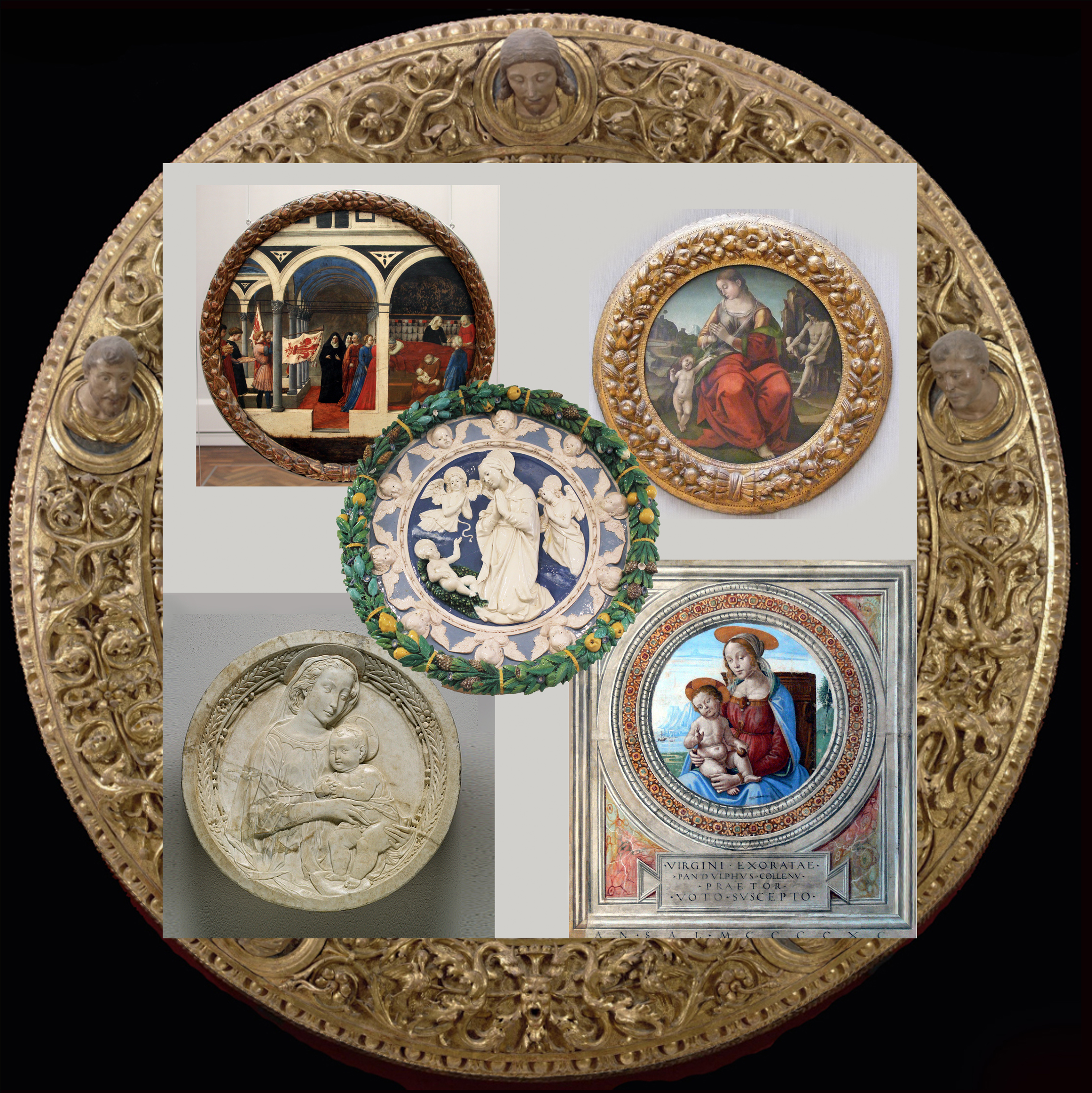



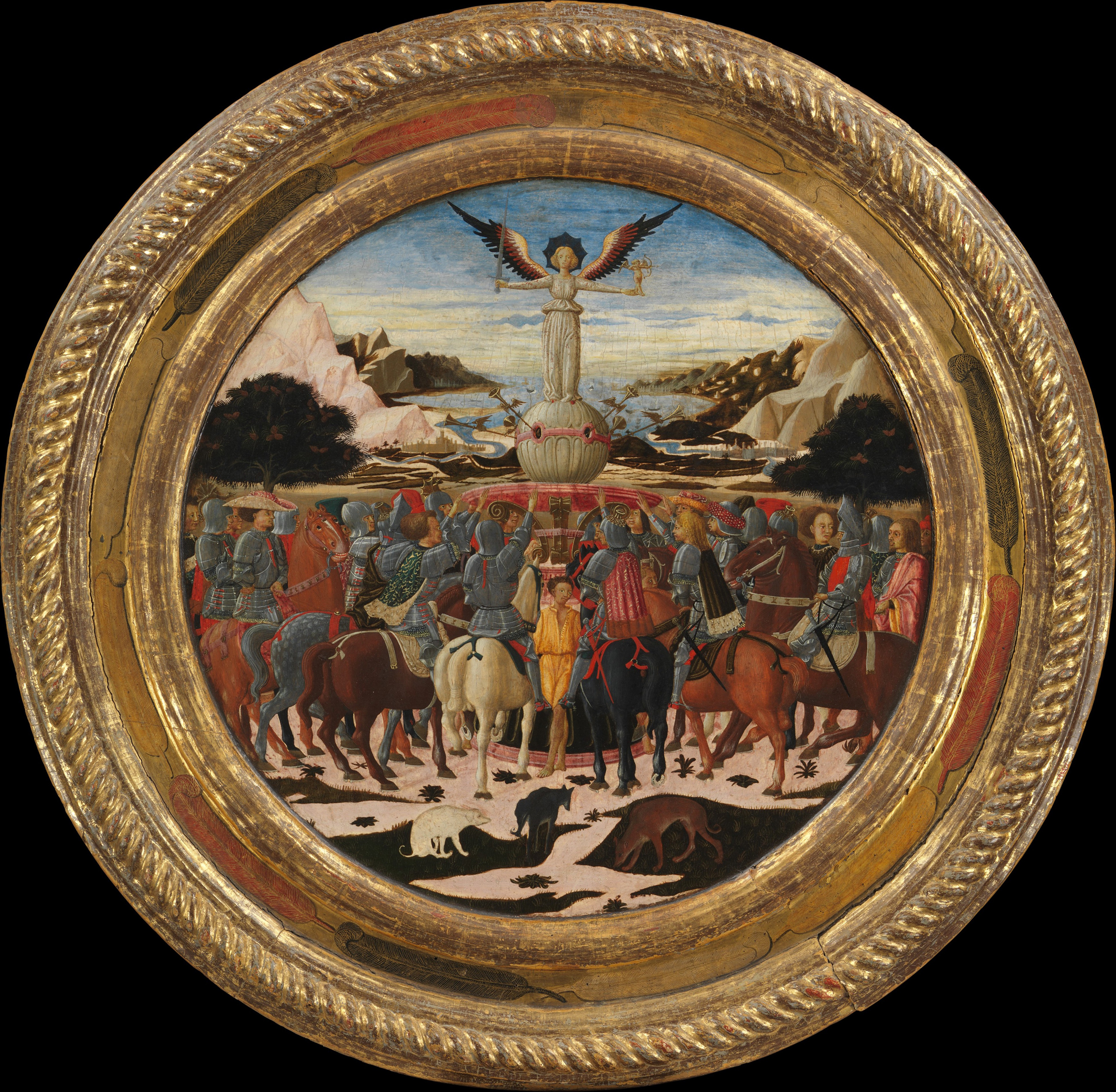
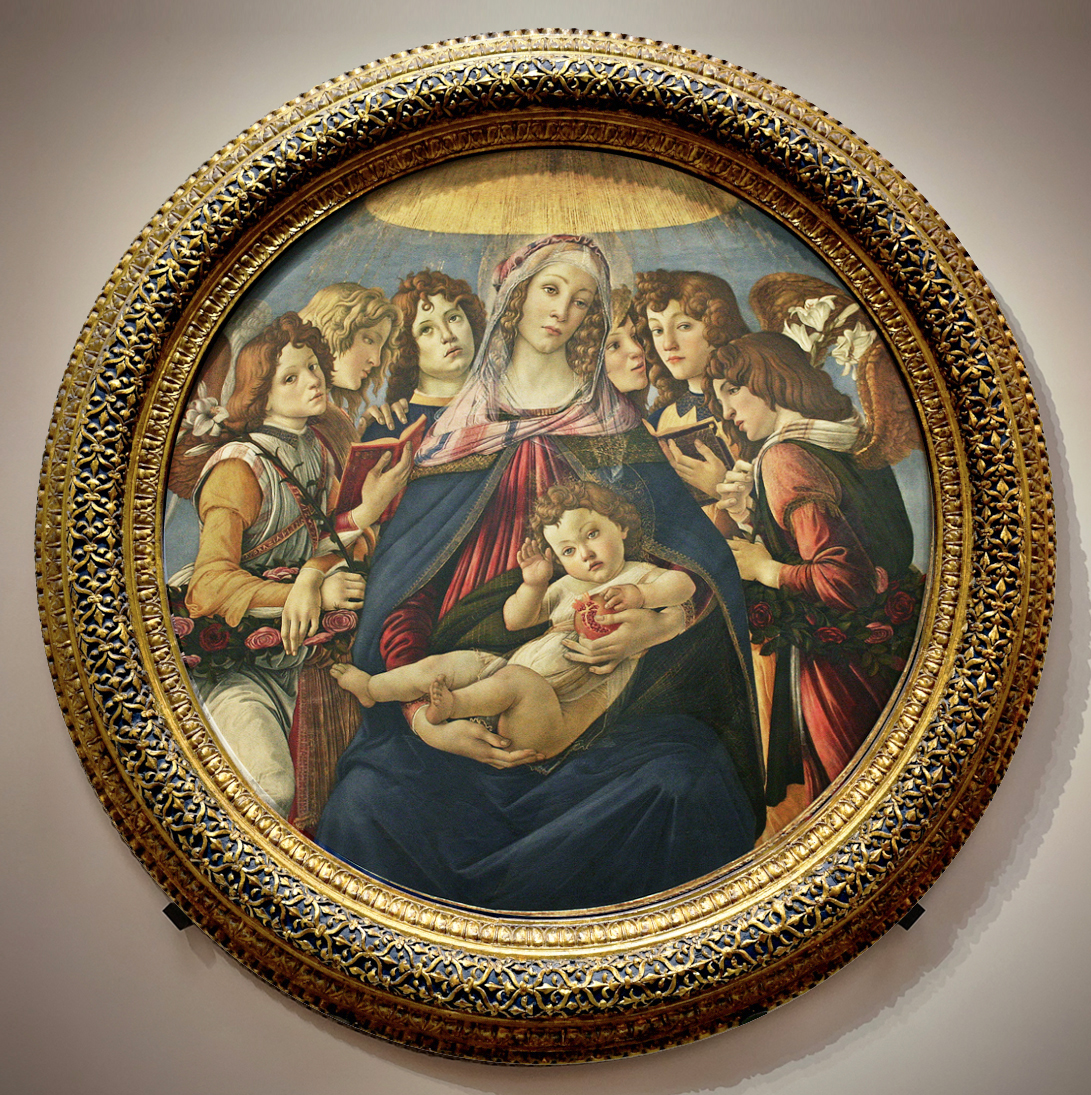
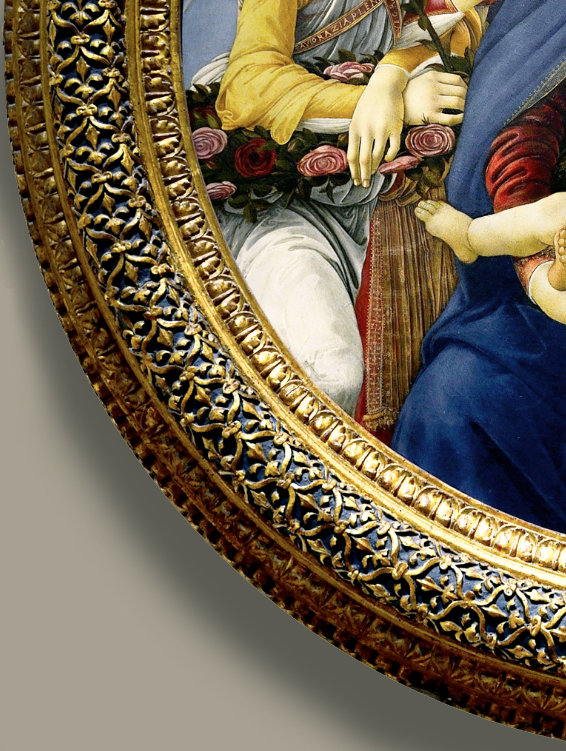
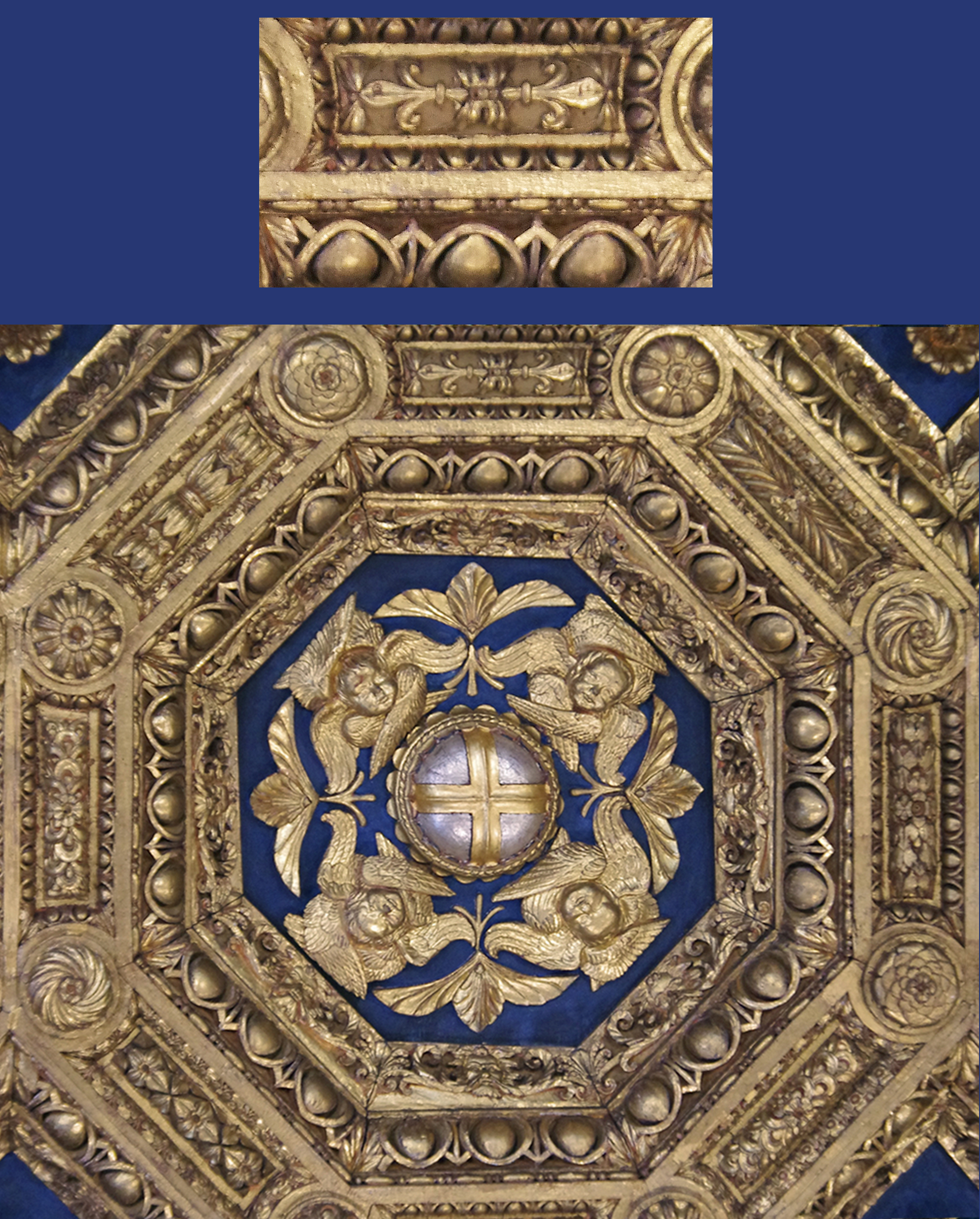


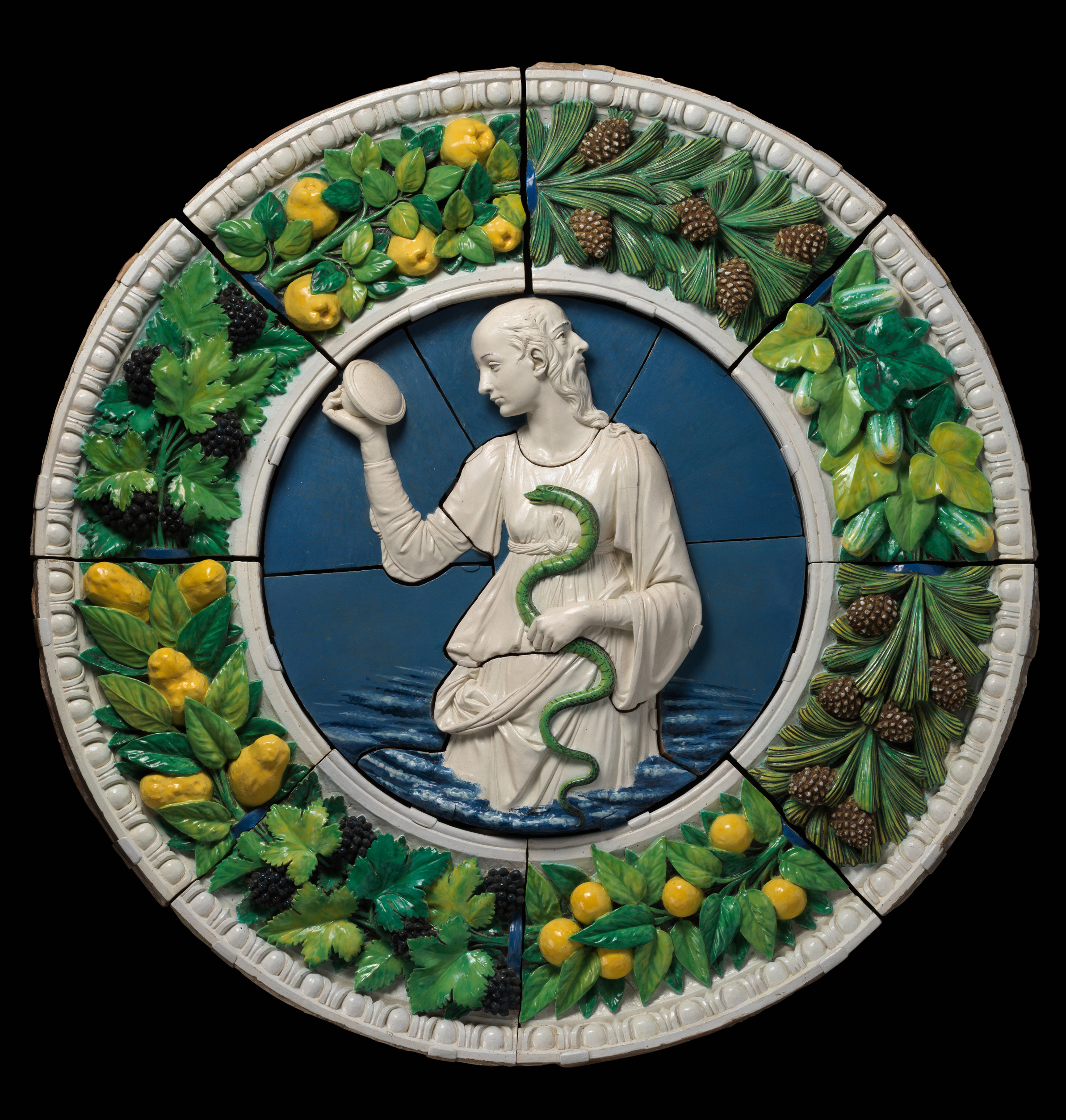
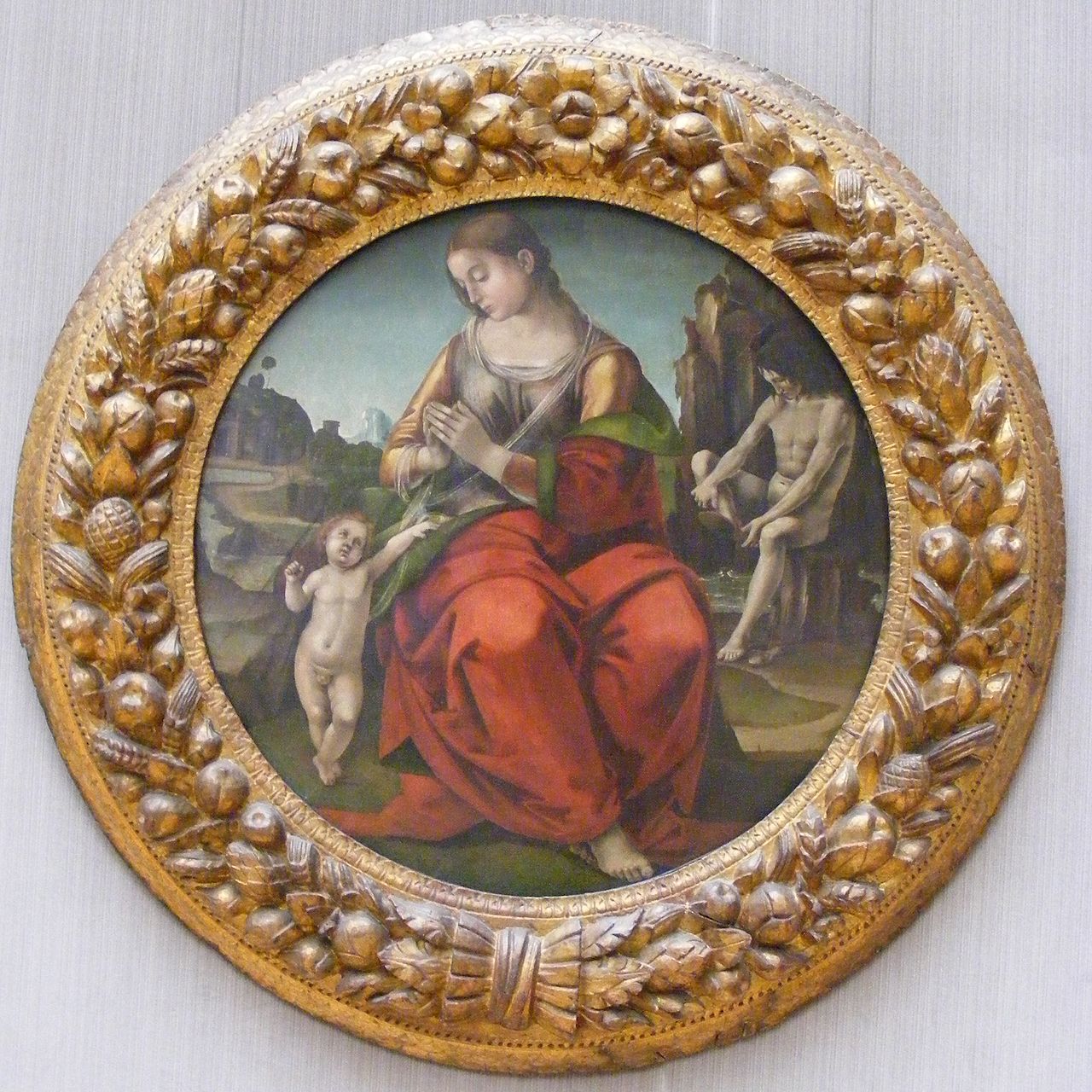
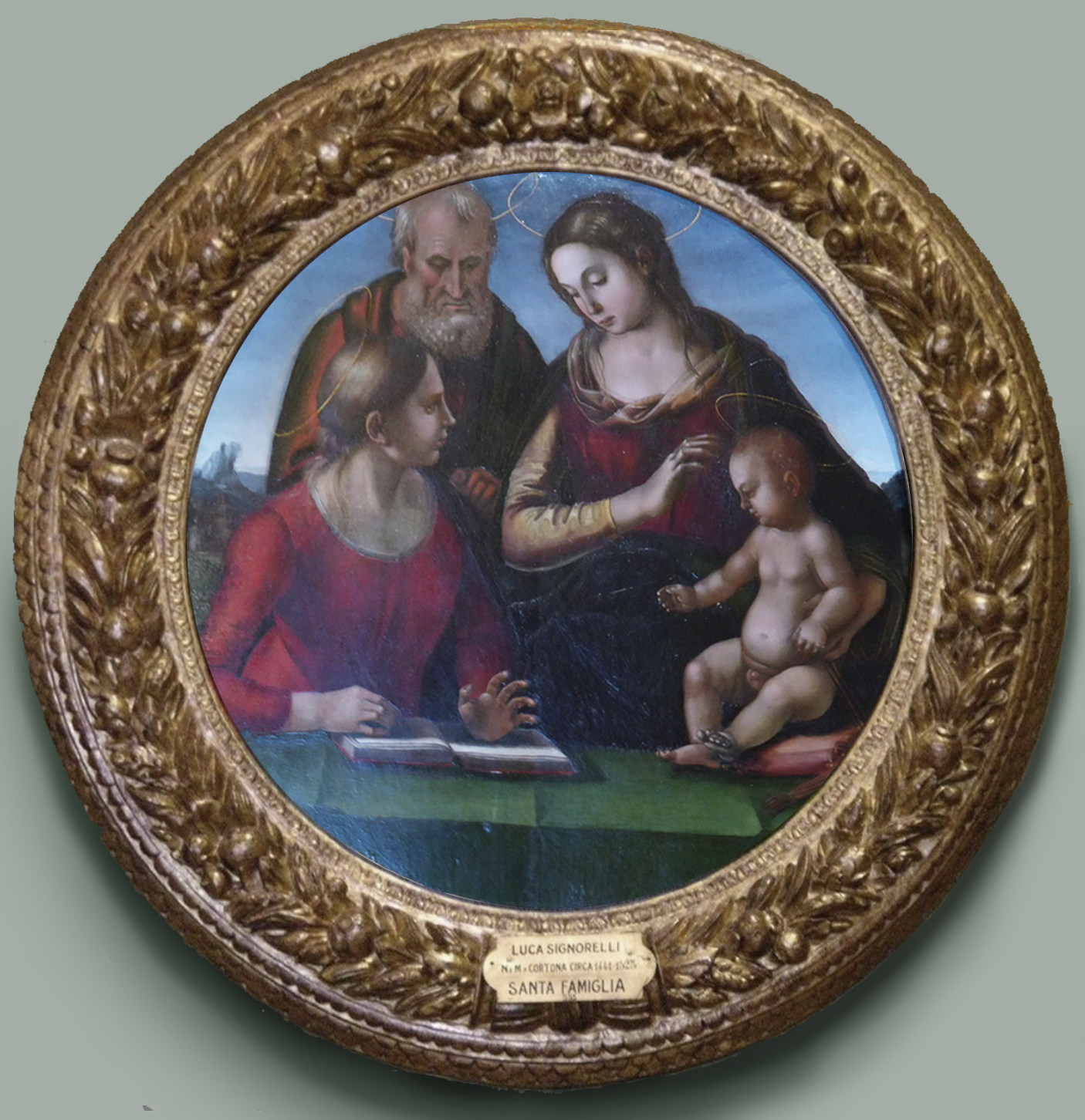






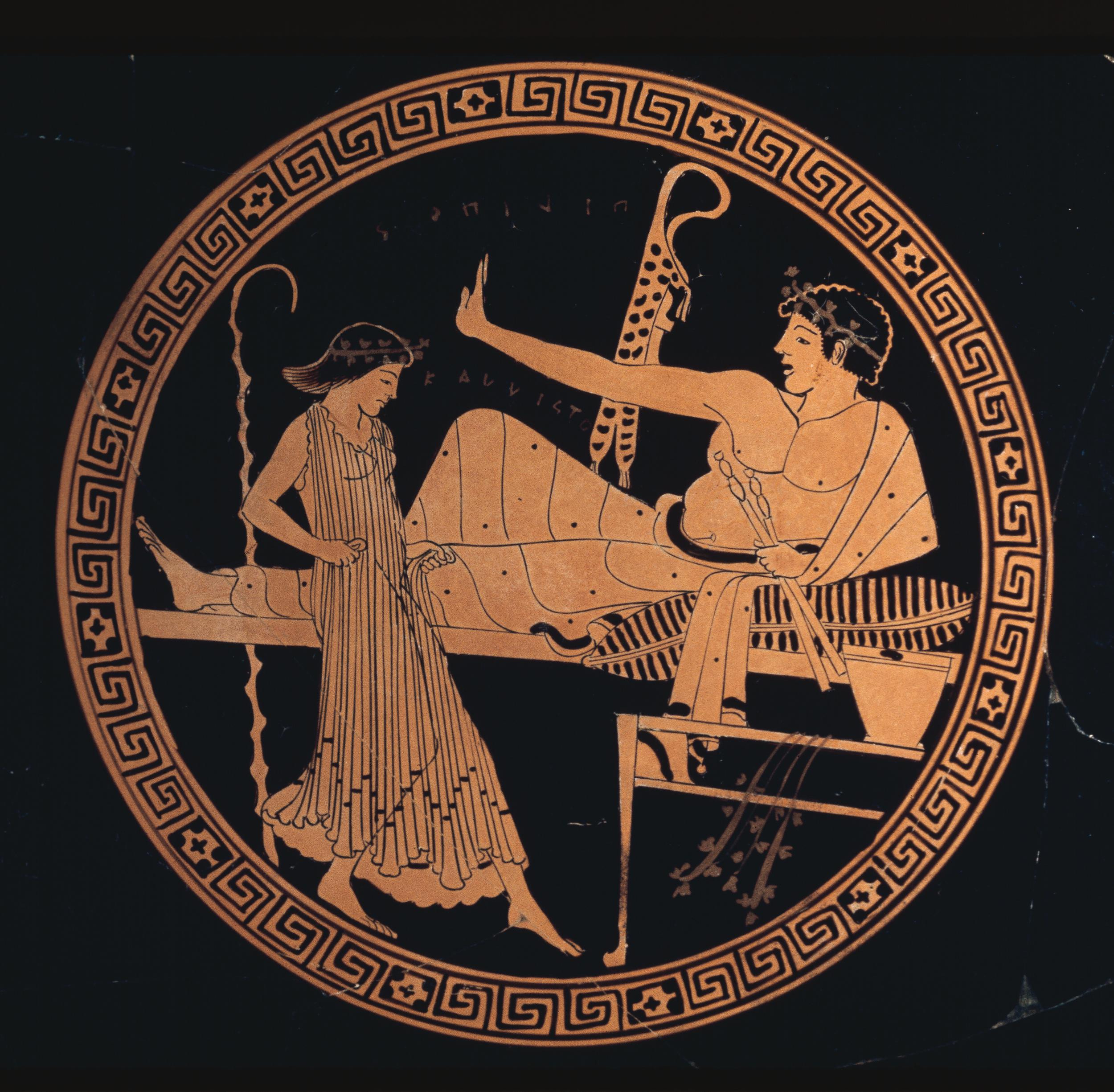

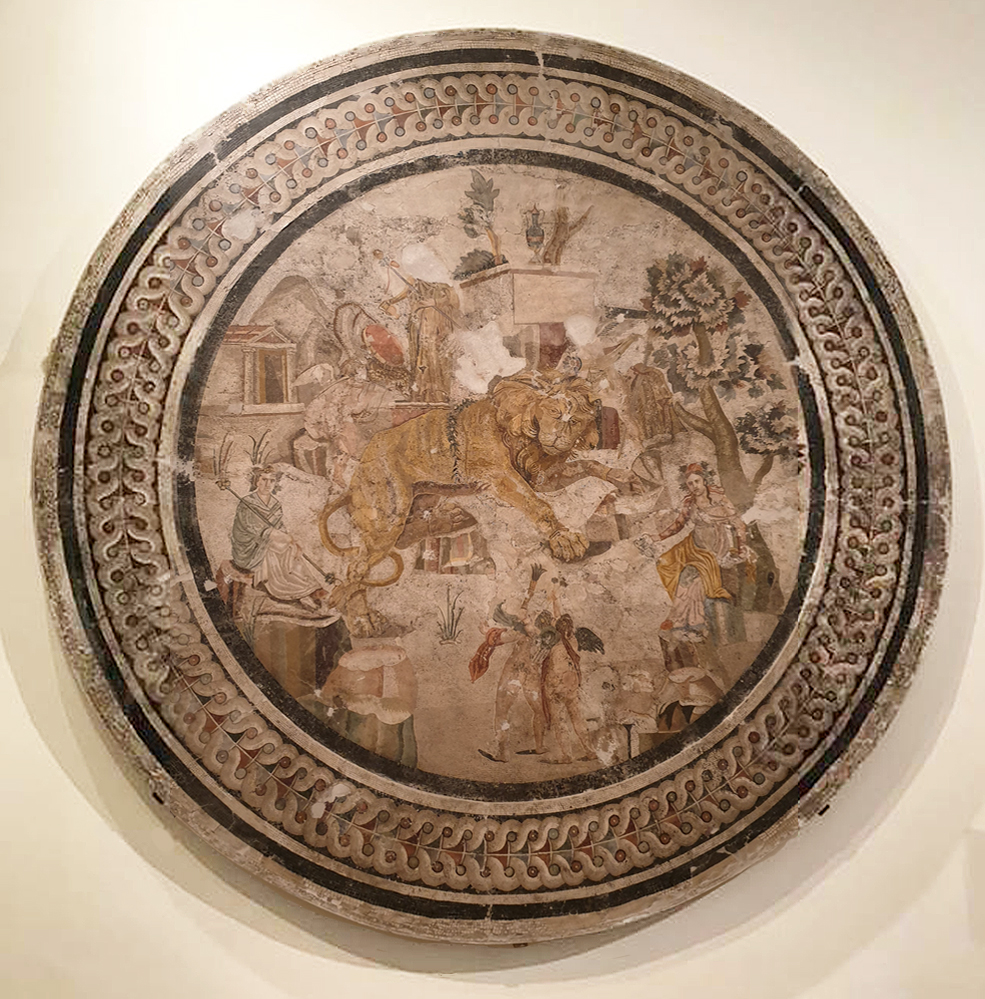
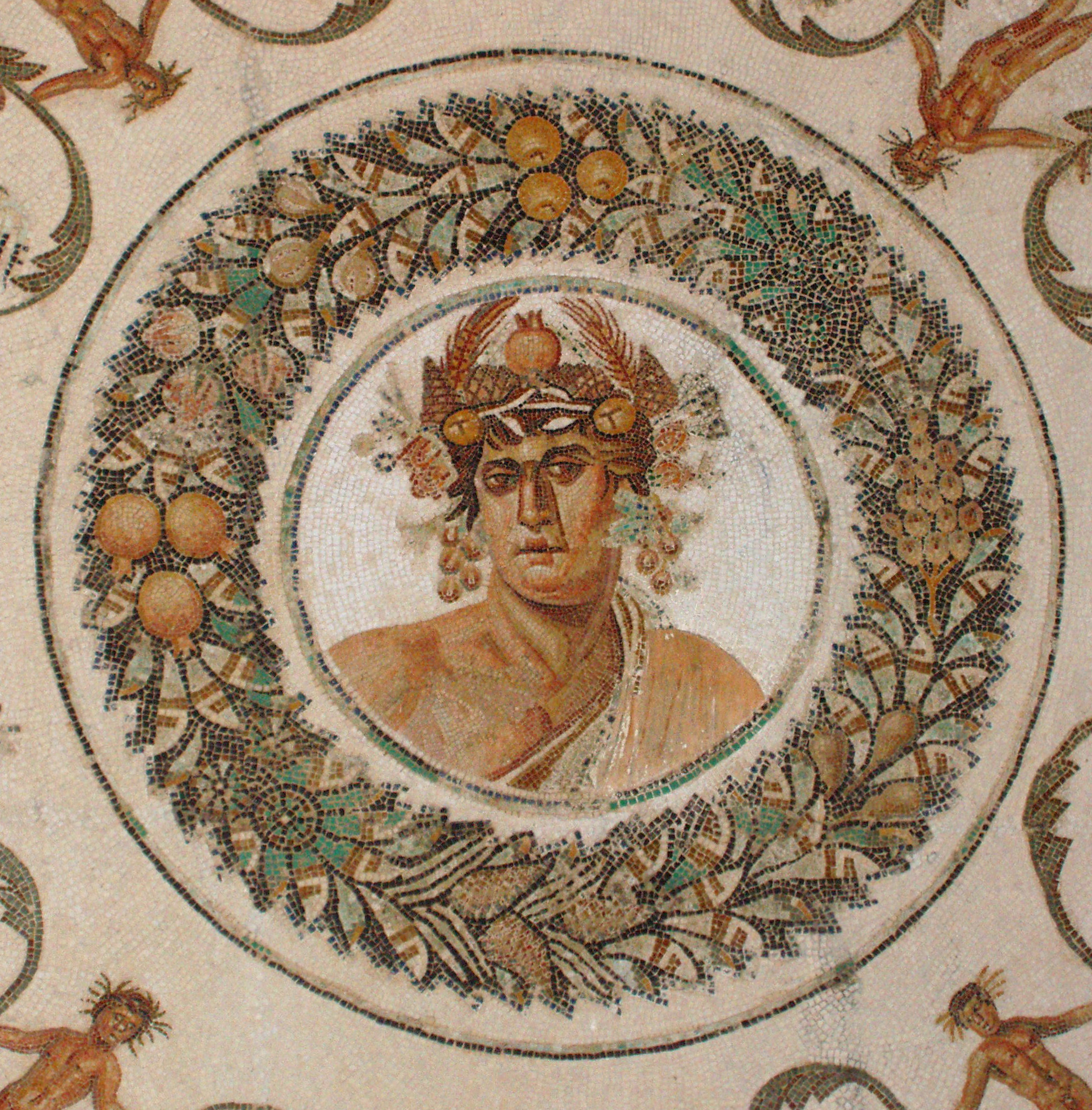





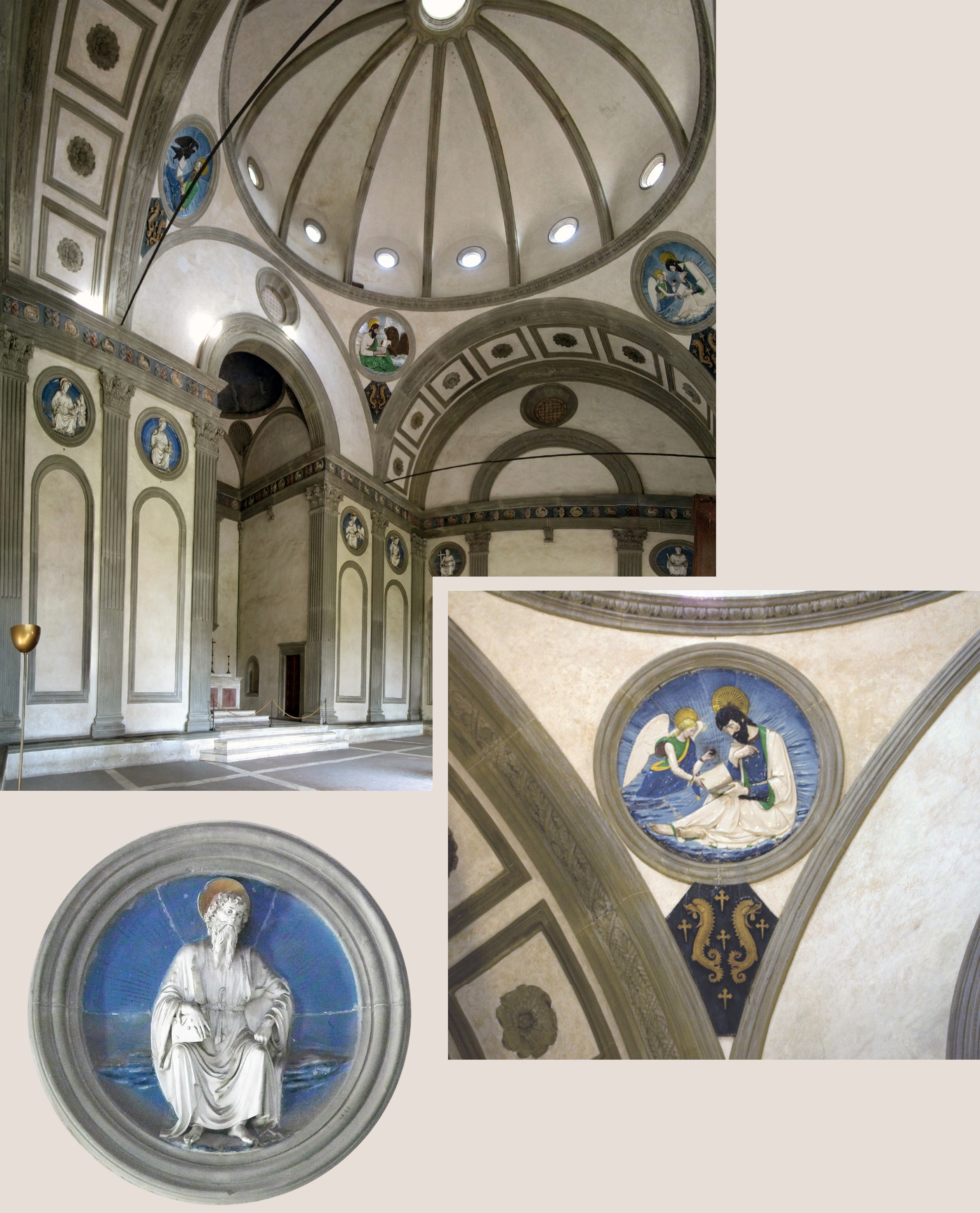
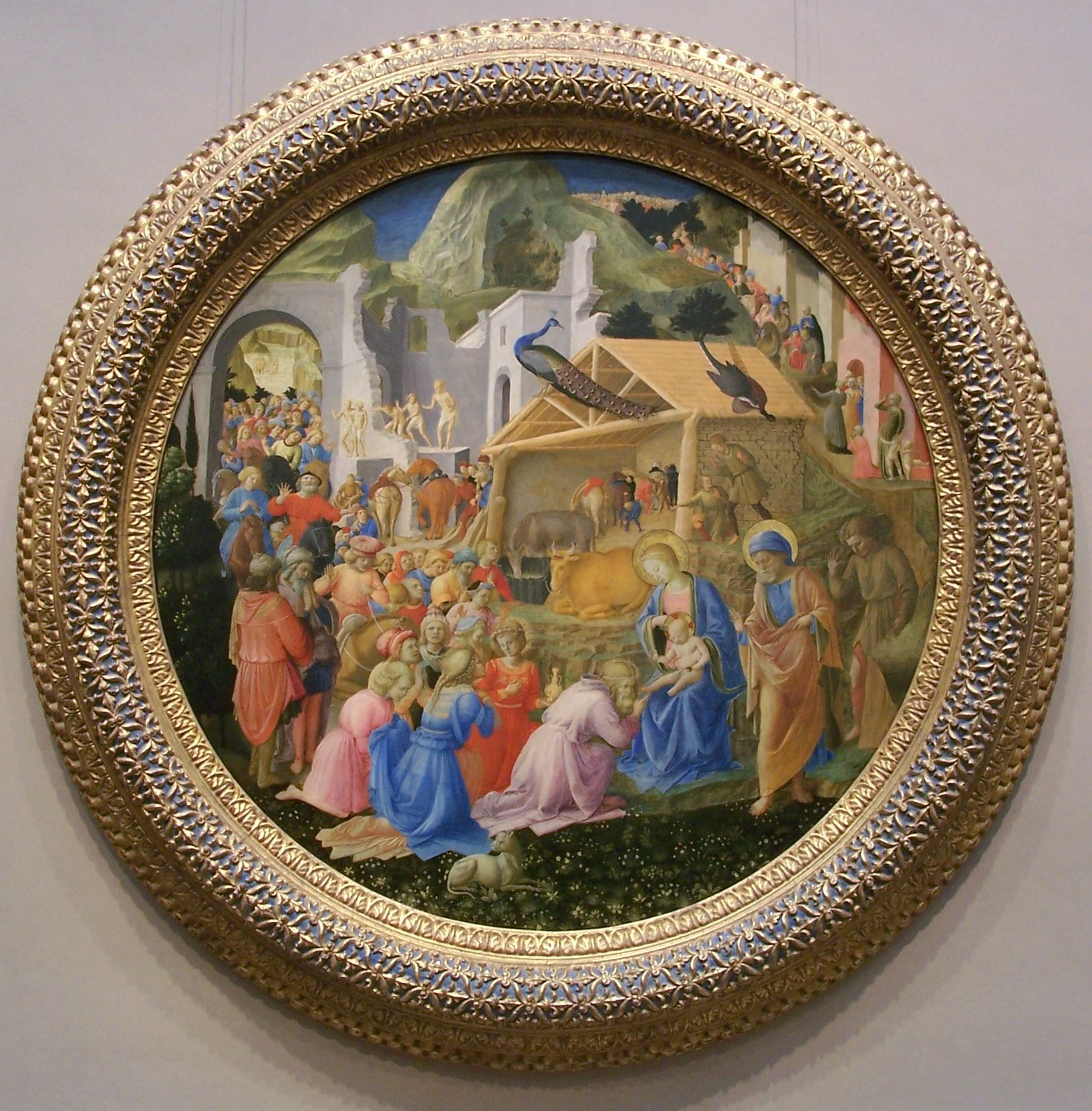
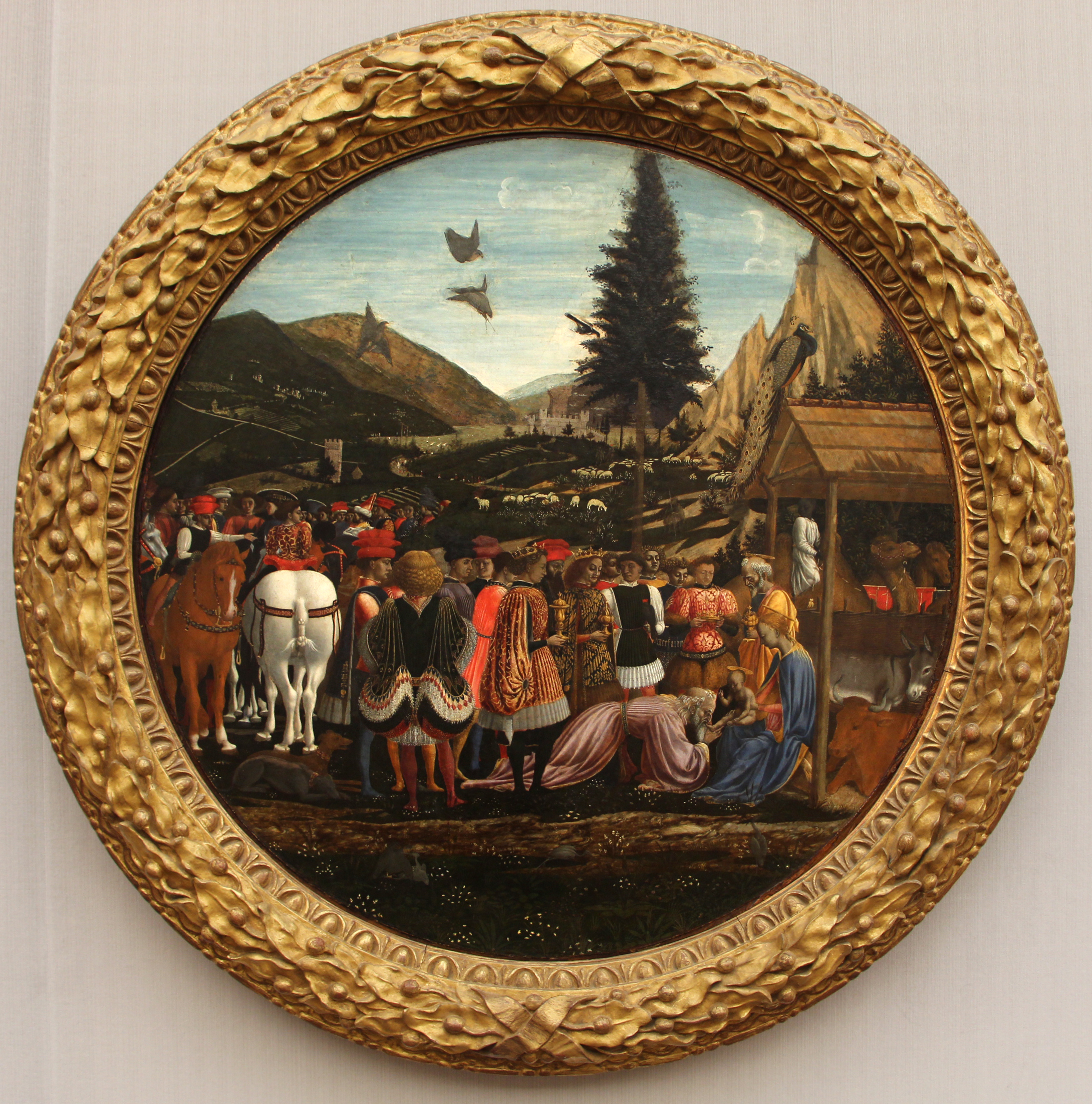

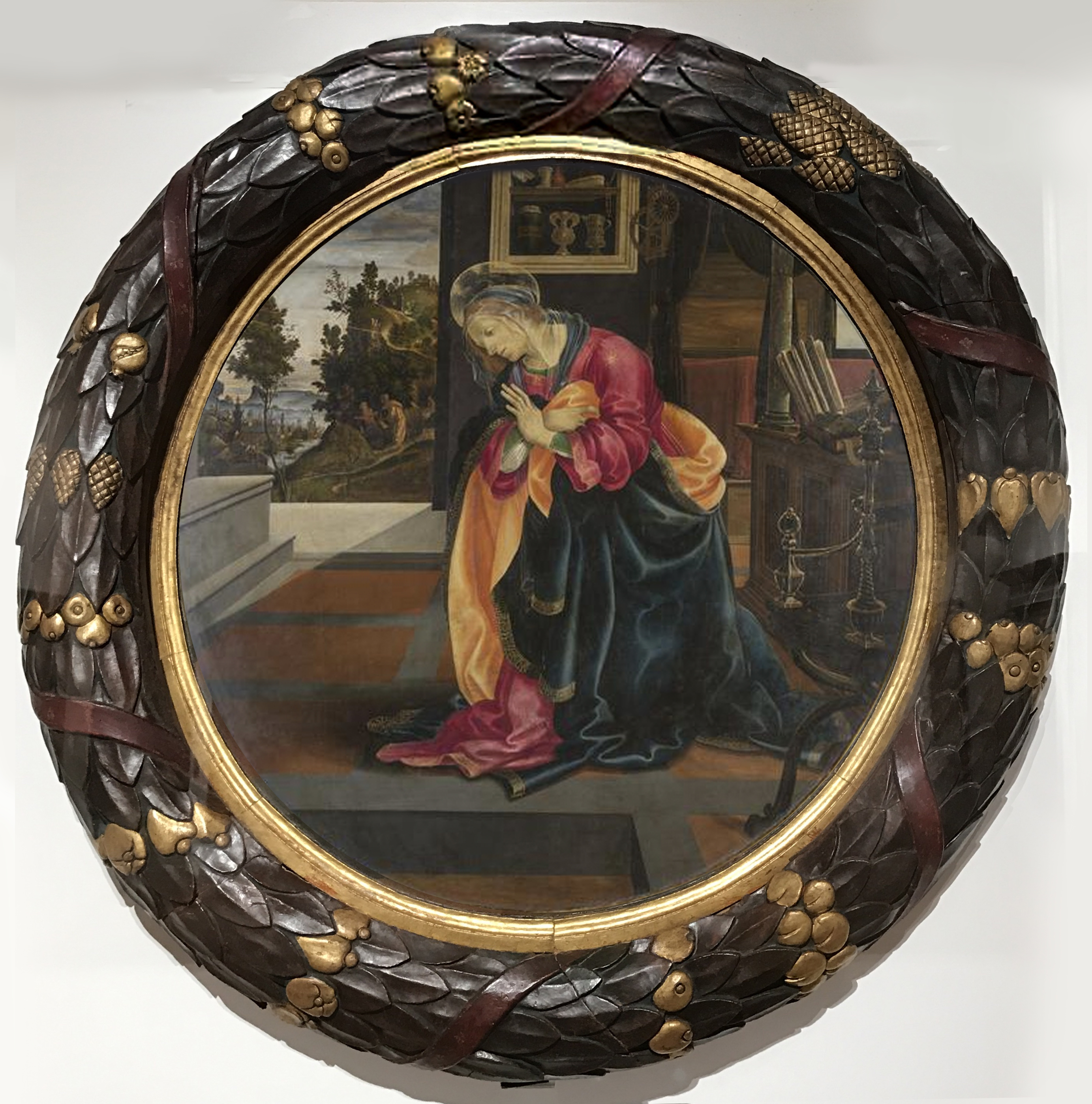


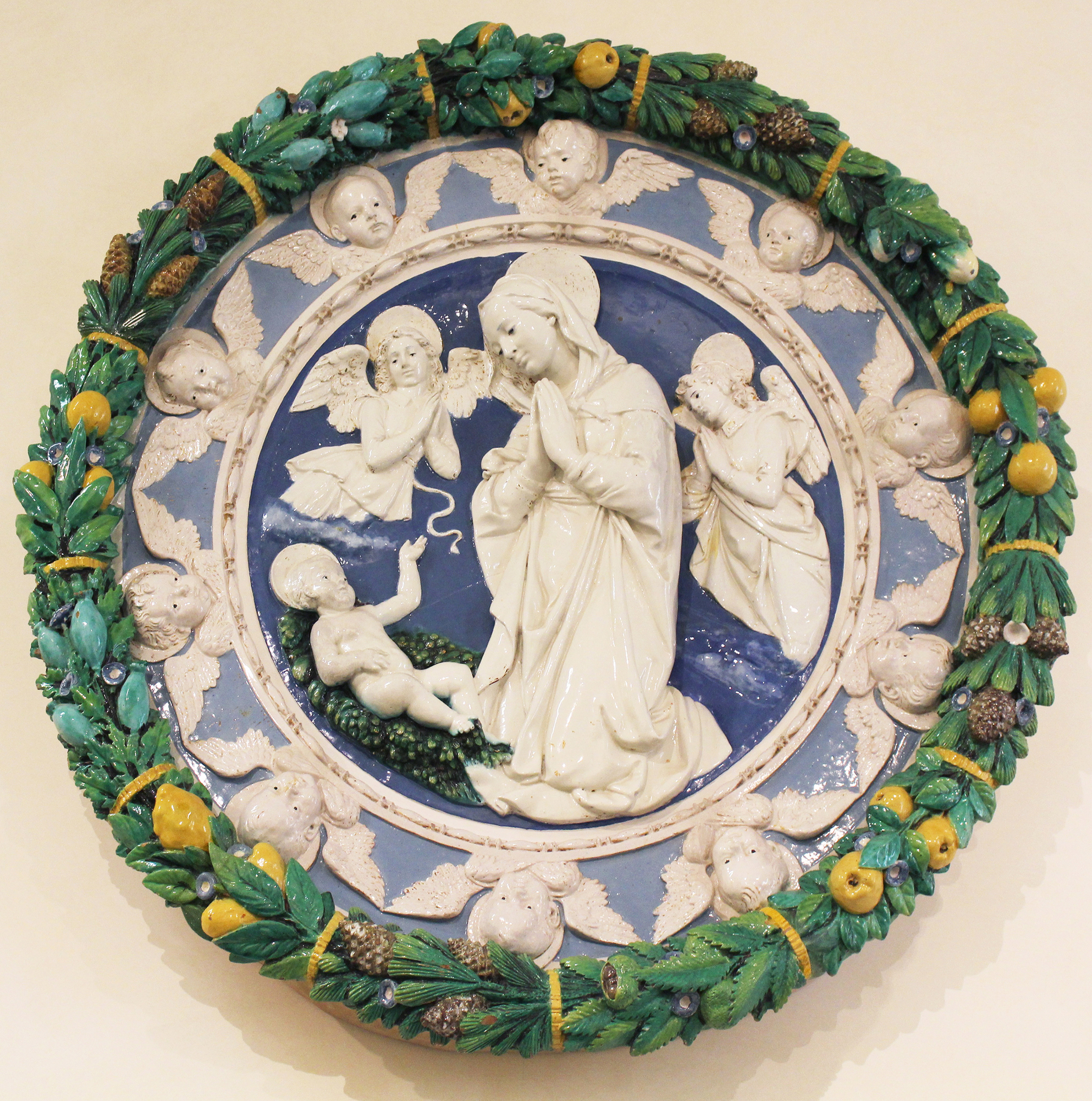

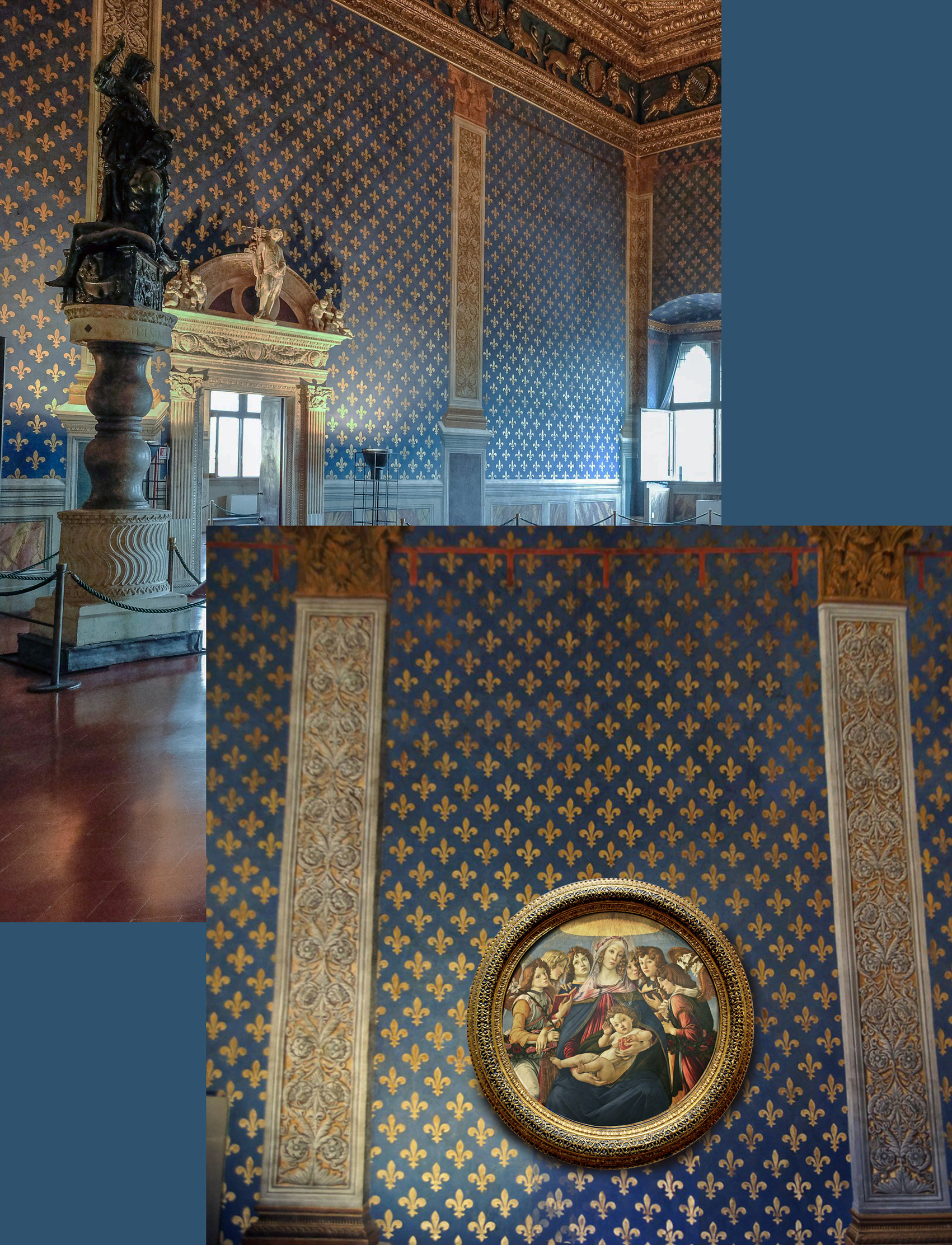

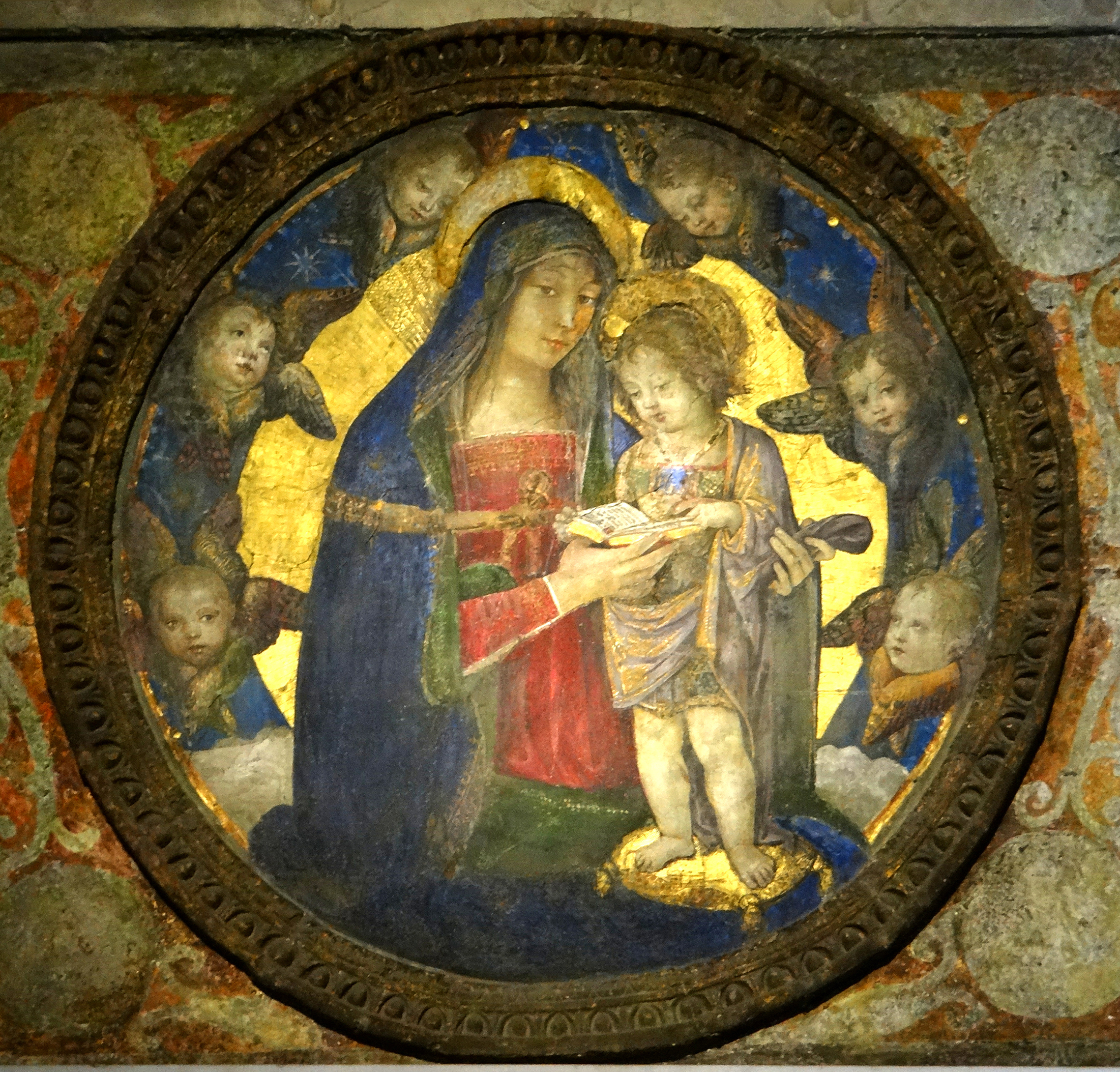
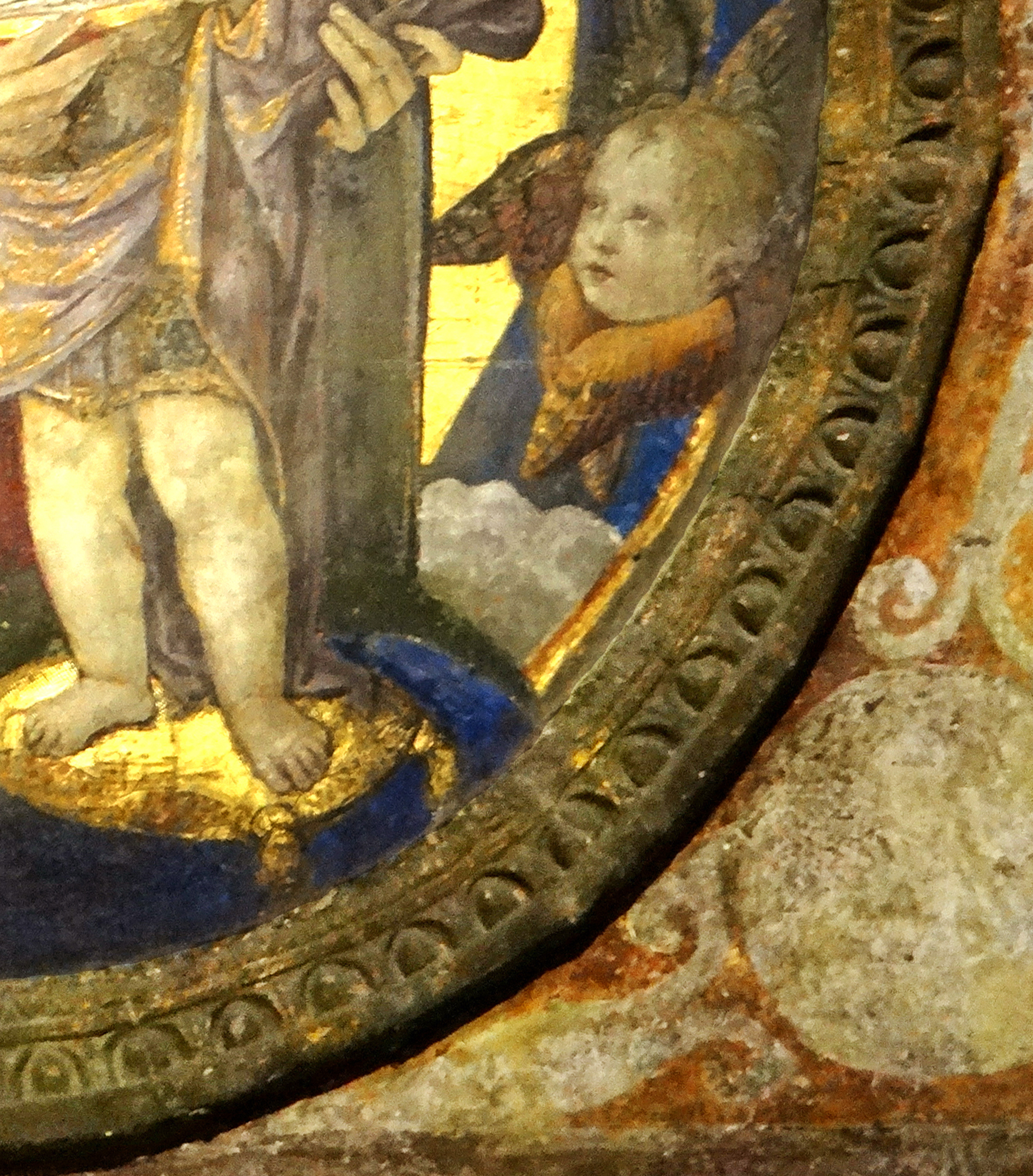





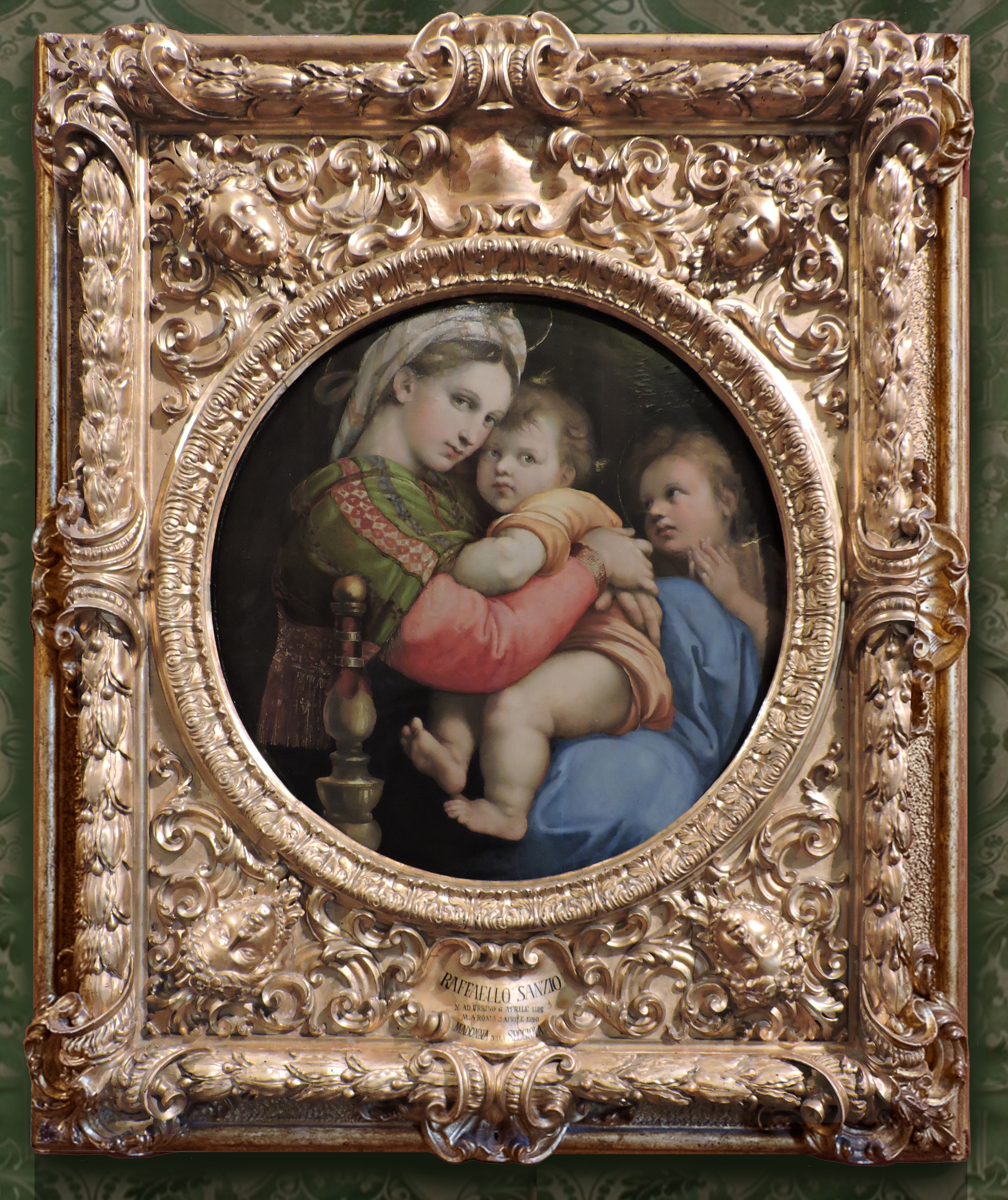

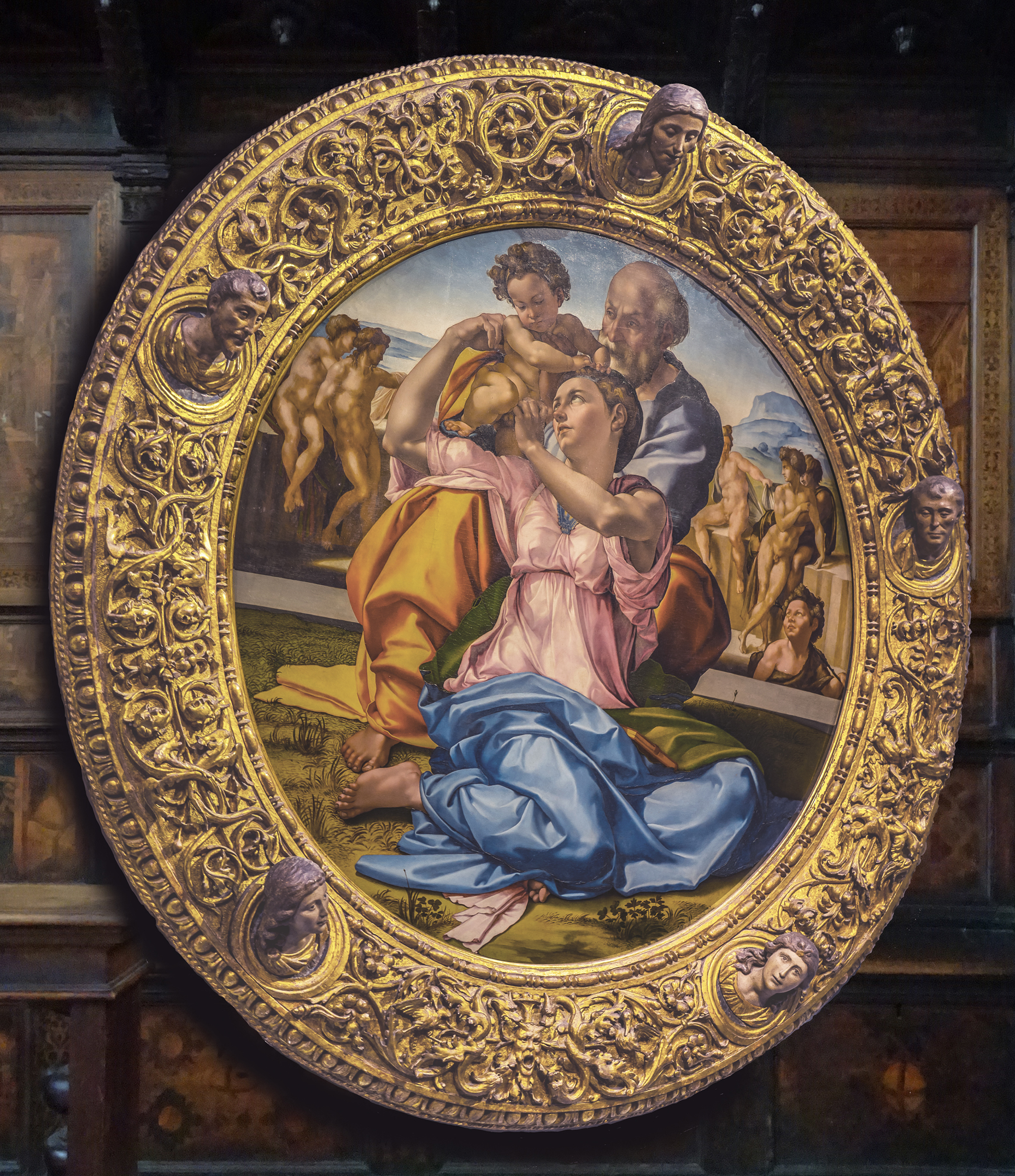
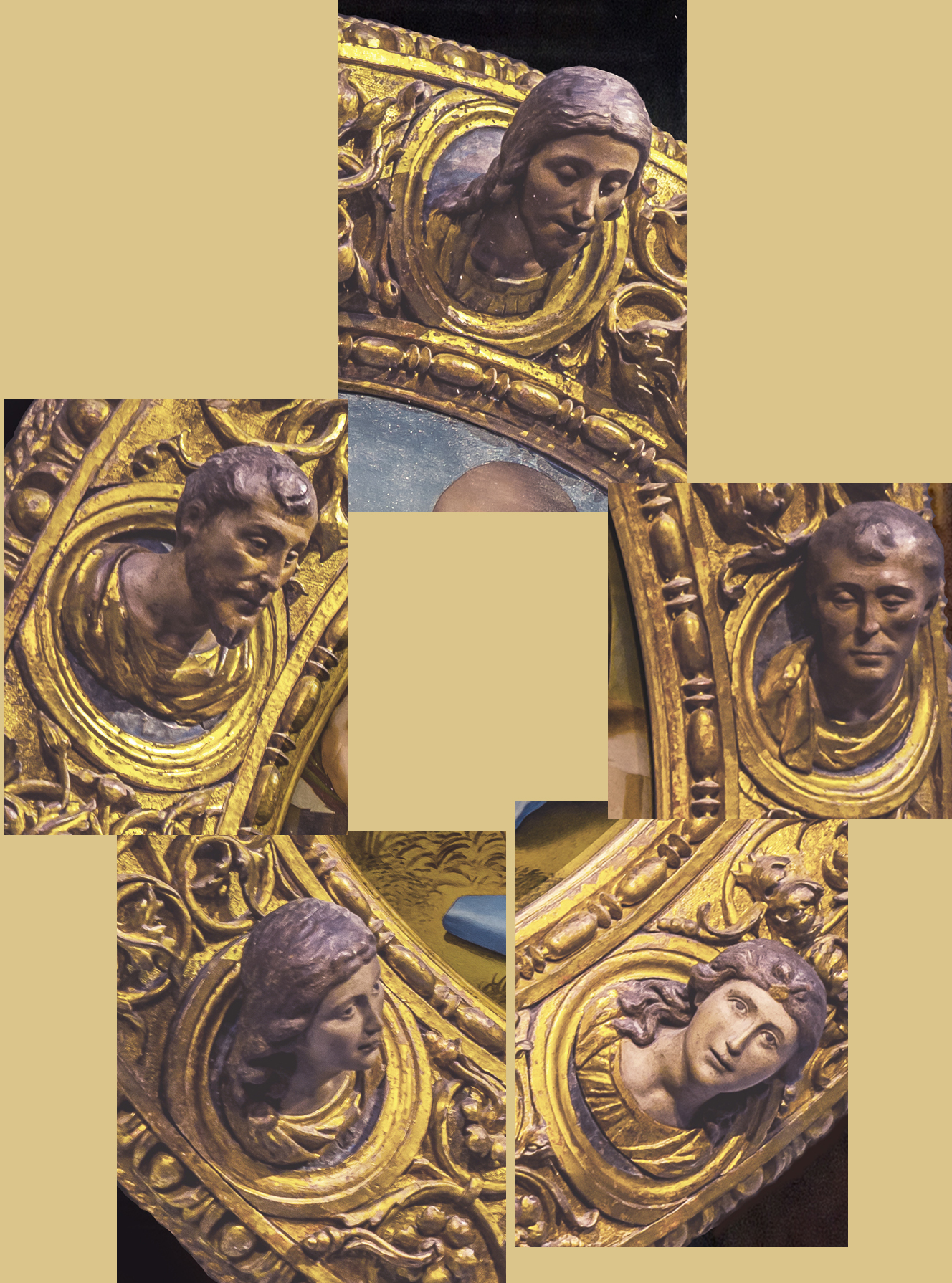


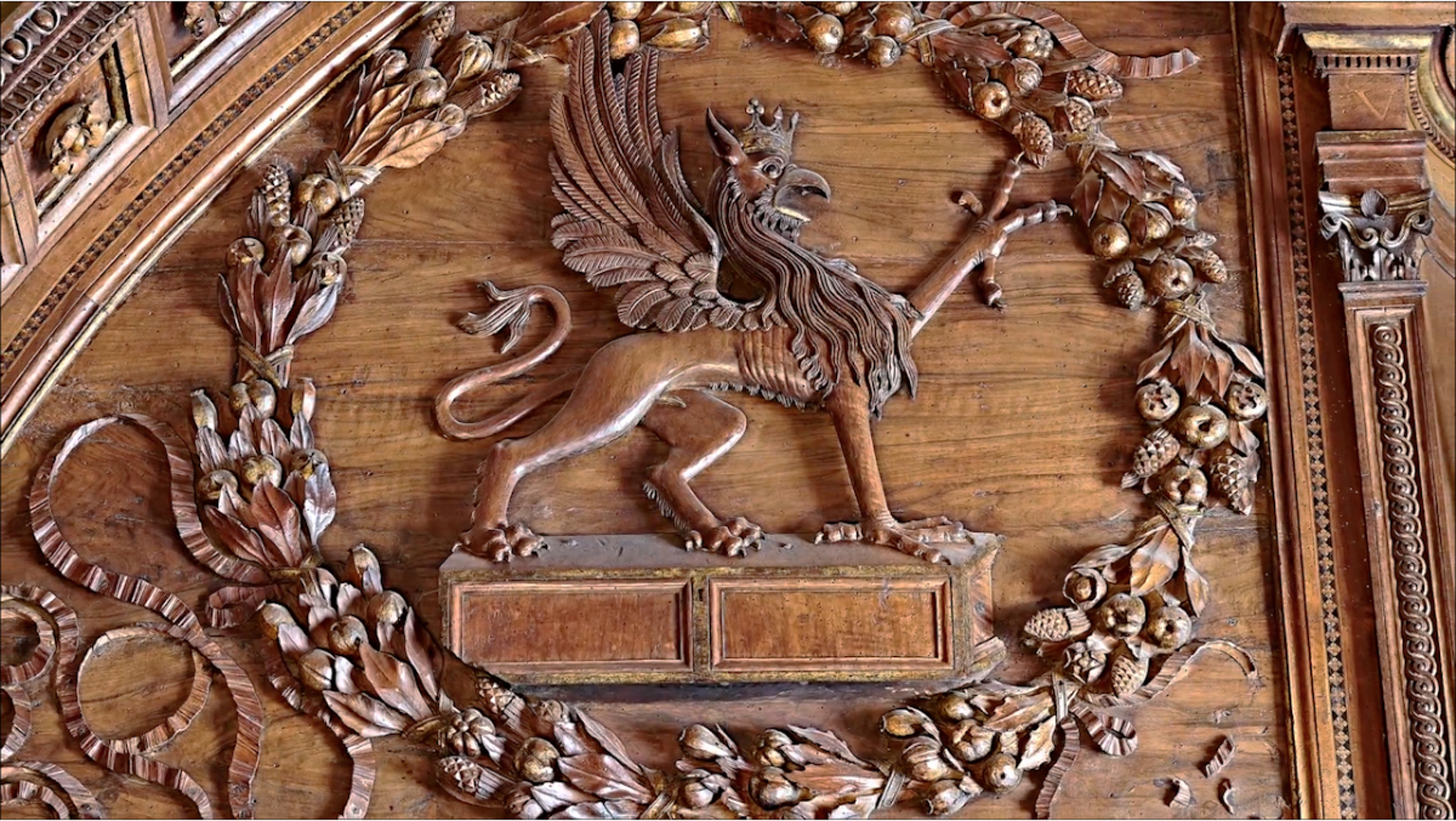

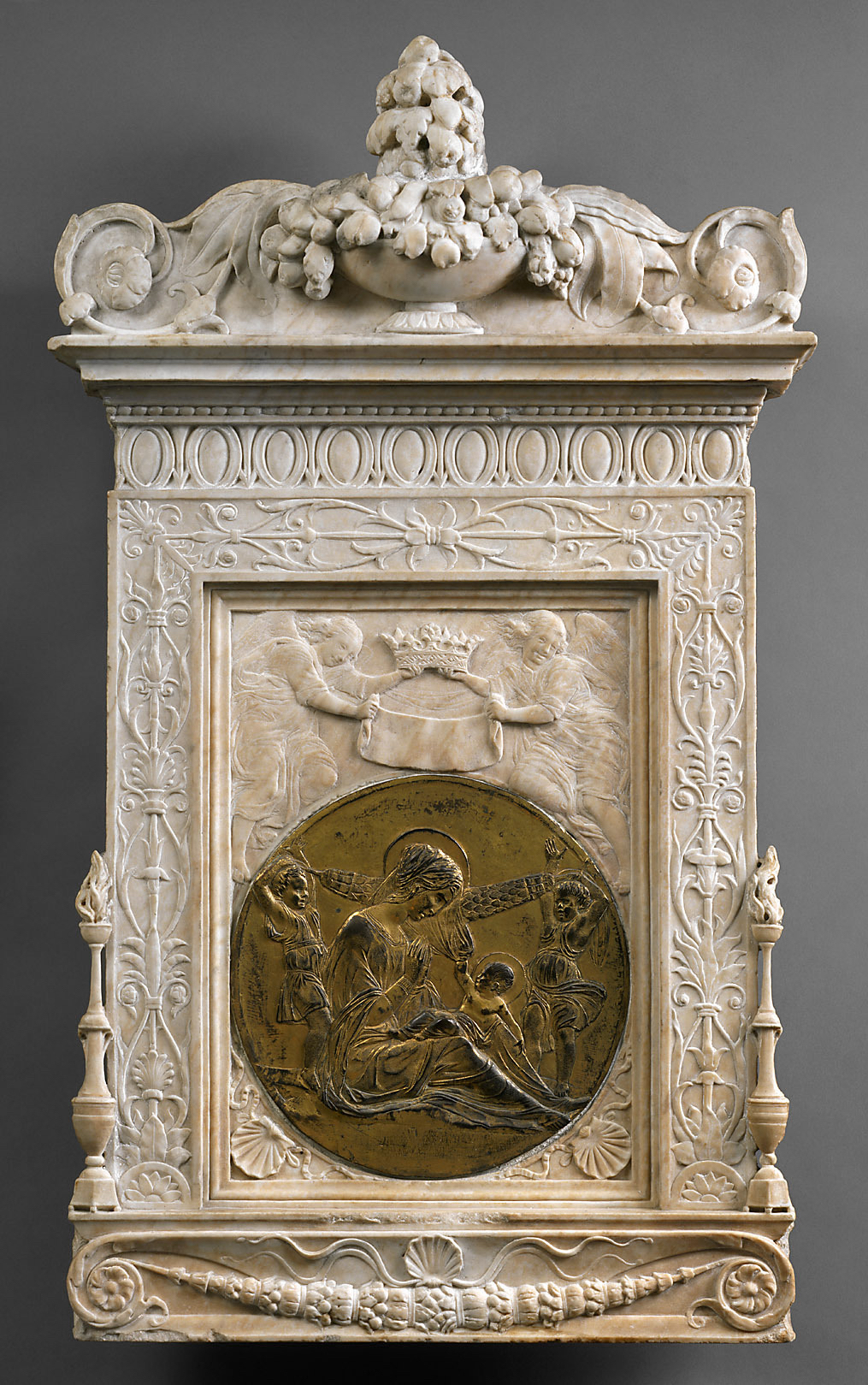
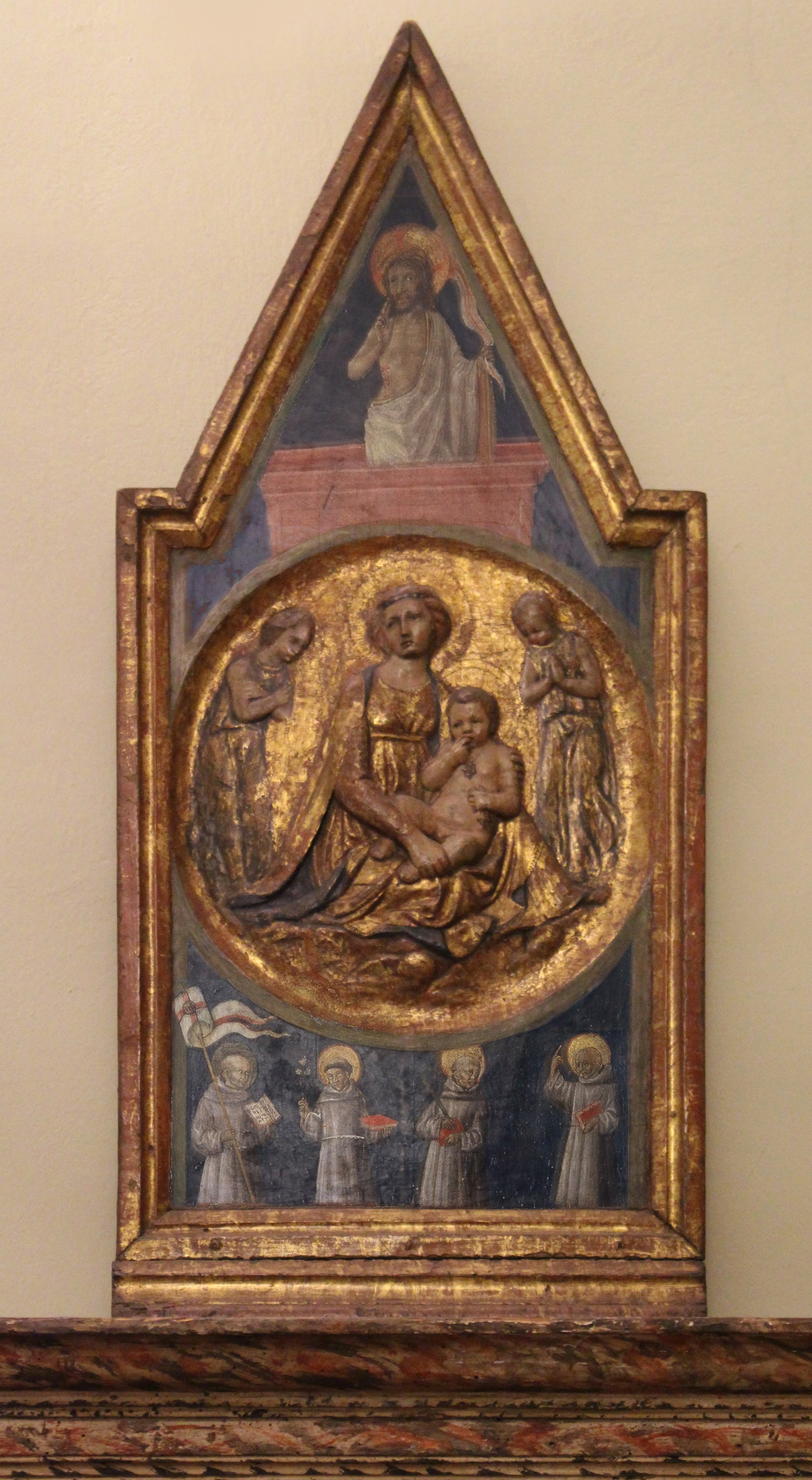




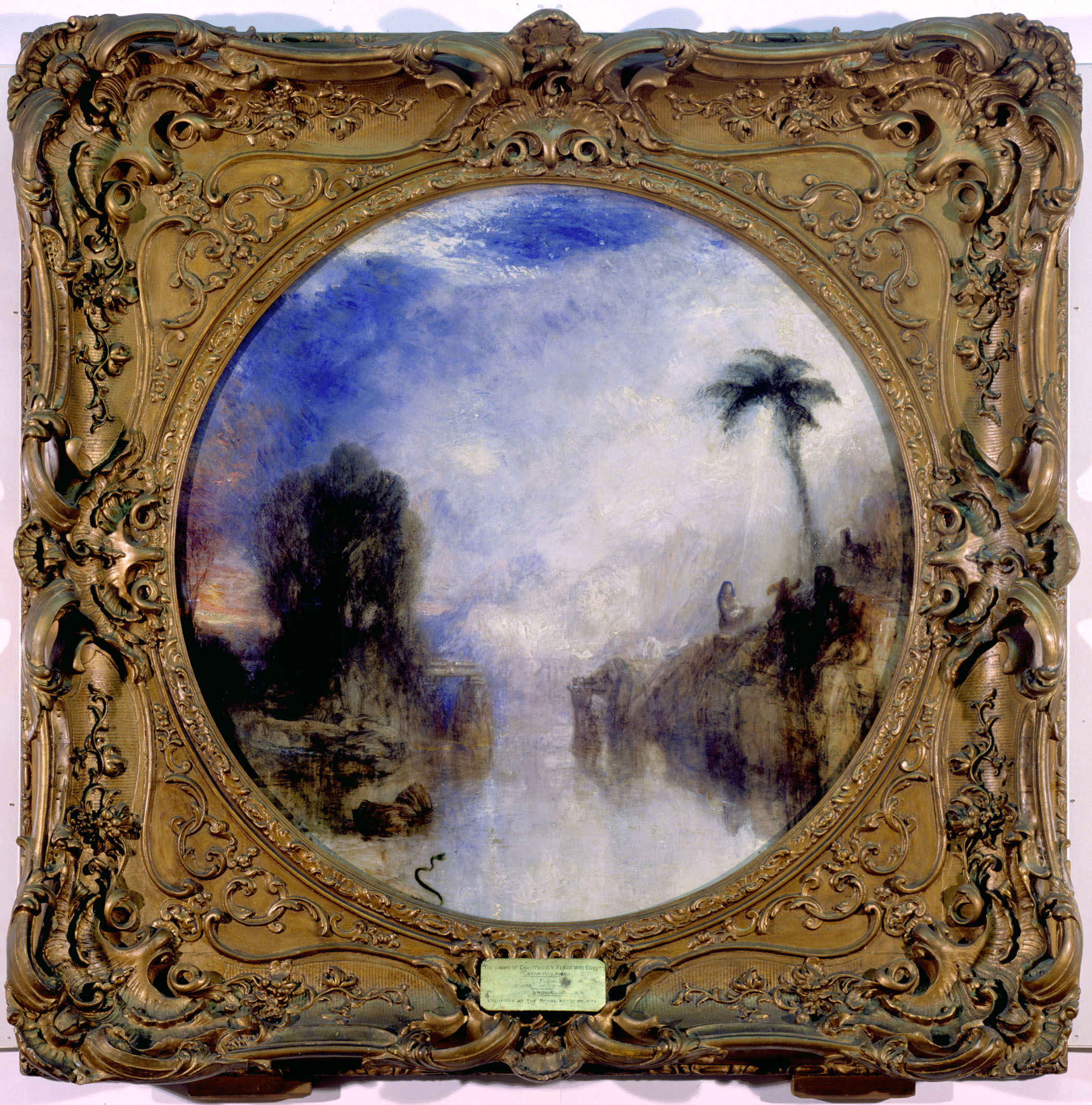
[…] For more on garland frames, see ‘Fruit, flowers, foliage: the symbolism of Renaissance frames’, and ‘The tondo frame in Renaissance Florence: a round-up’. […]
LikeLike